
Oops, I’m still getting up at the wrong time of day after having a cold. But why not read some comics, then?
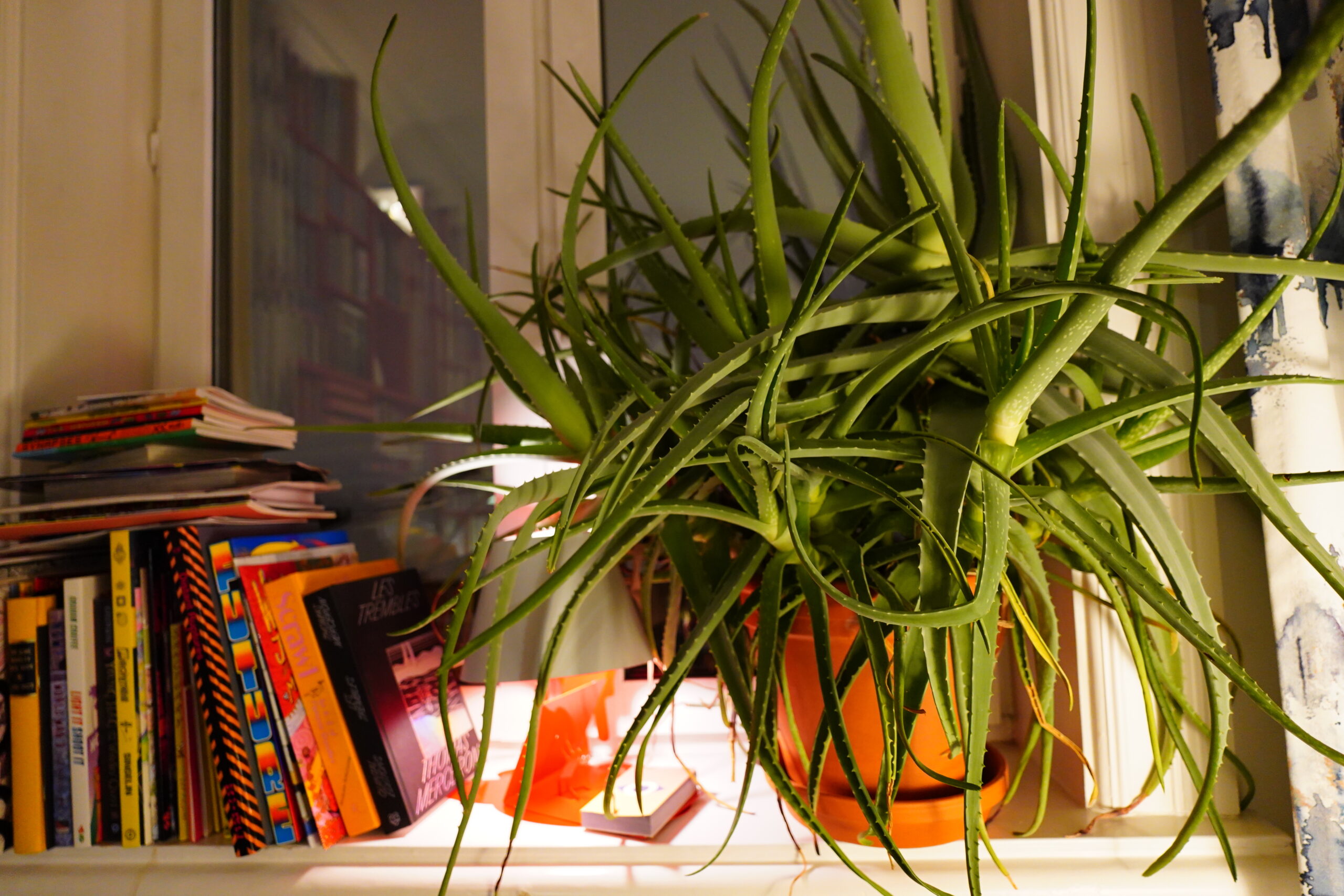
Hey! It’s snowing again!
And I’ve gotten a bunch of comics in the mail that I’m excited to read, so let’s get started.
| Shearwater: Animal Joy |  |

03:06: Good Night and Sweet Dreams! by Teddy Goldberg (Kuš)
Ah, yeah, I bought a bunch of small books from Kuš — not their mini series, and not the main anthology series, but thicker single creator books.
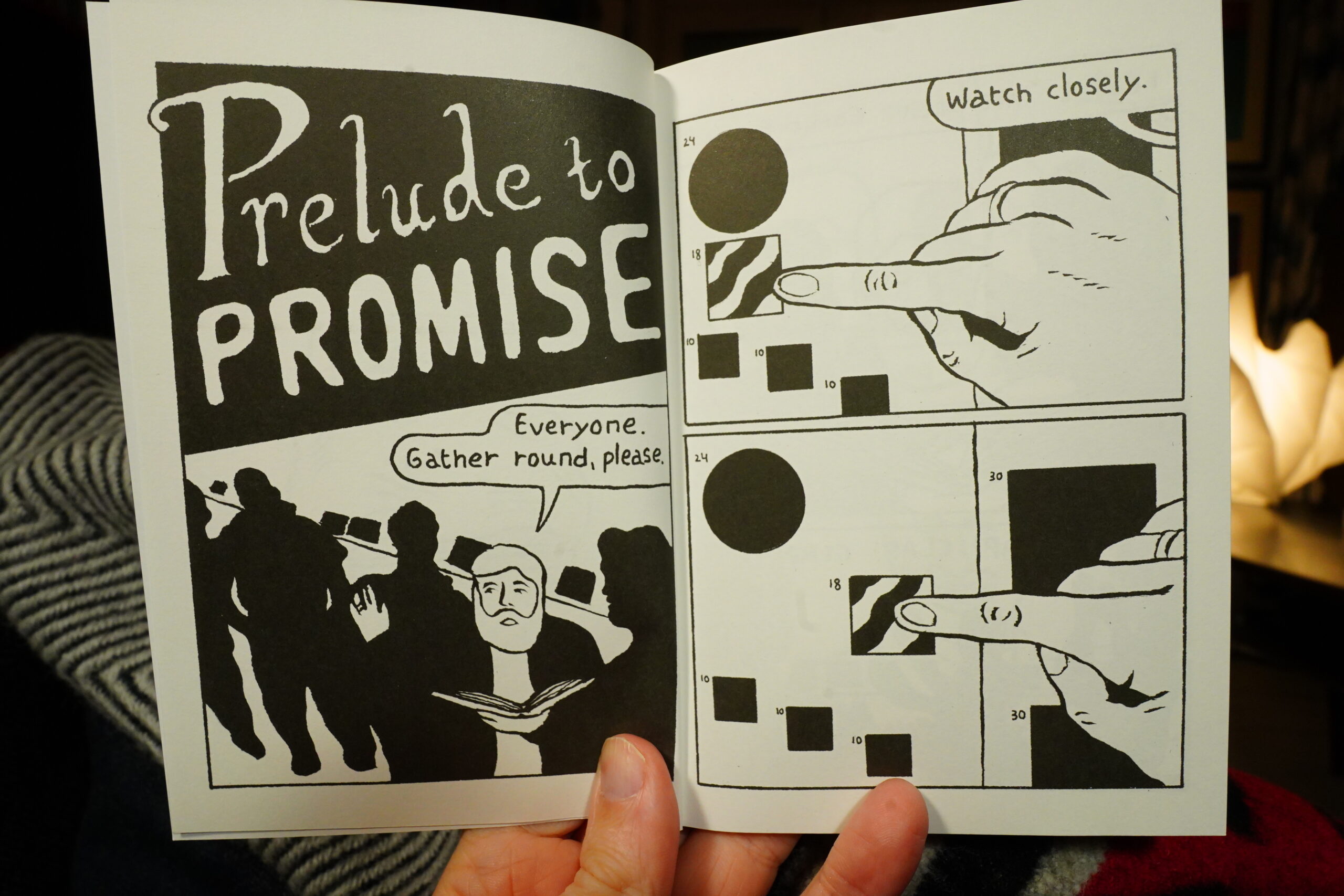
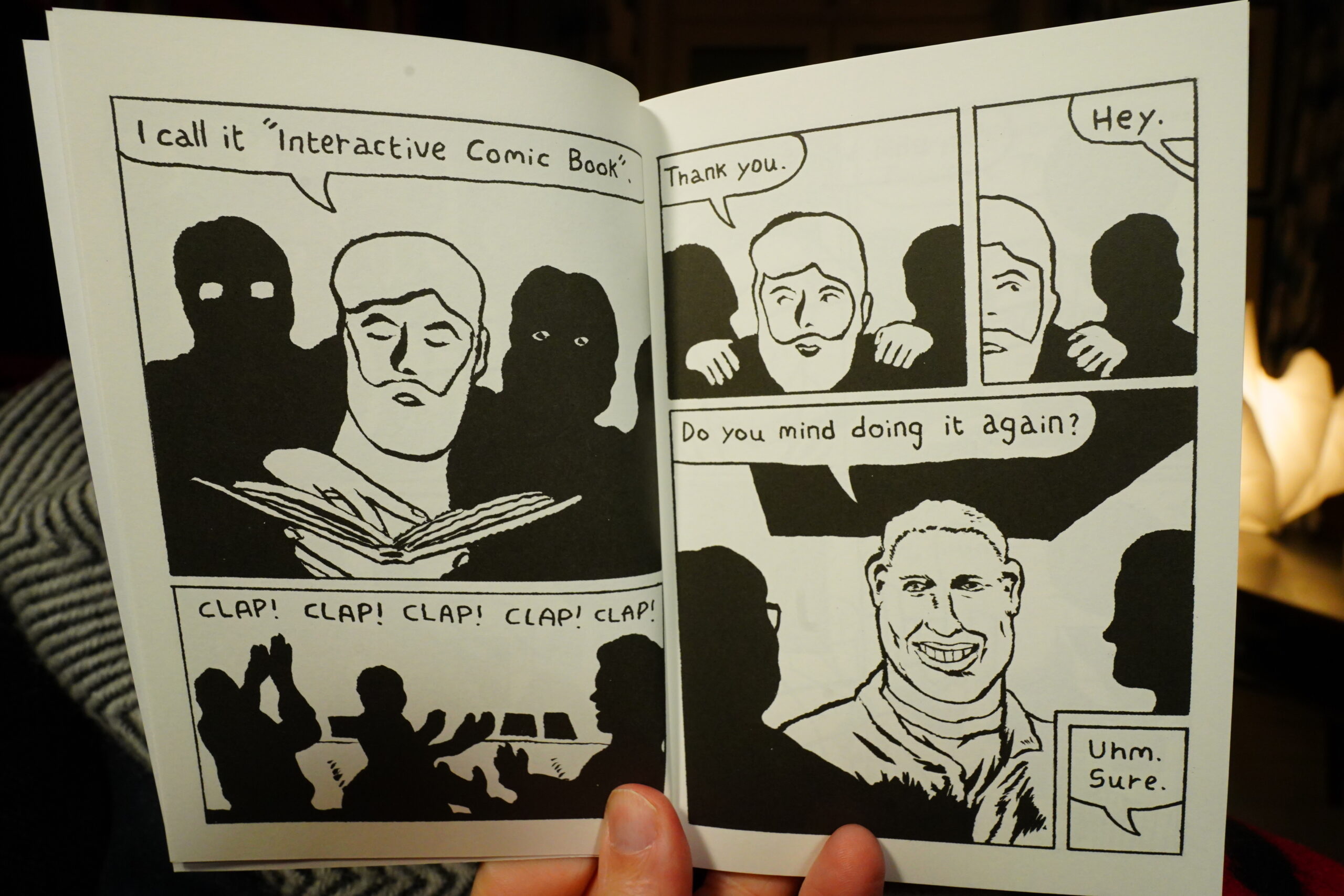
Heh heh.
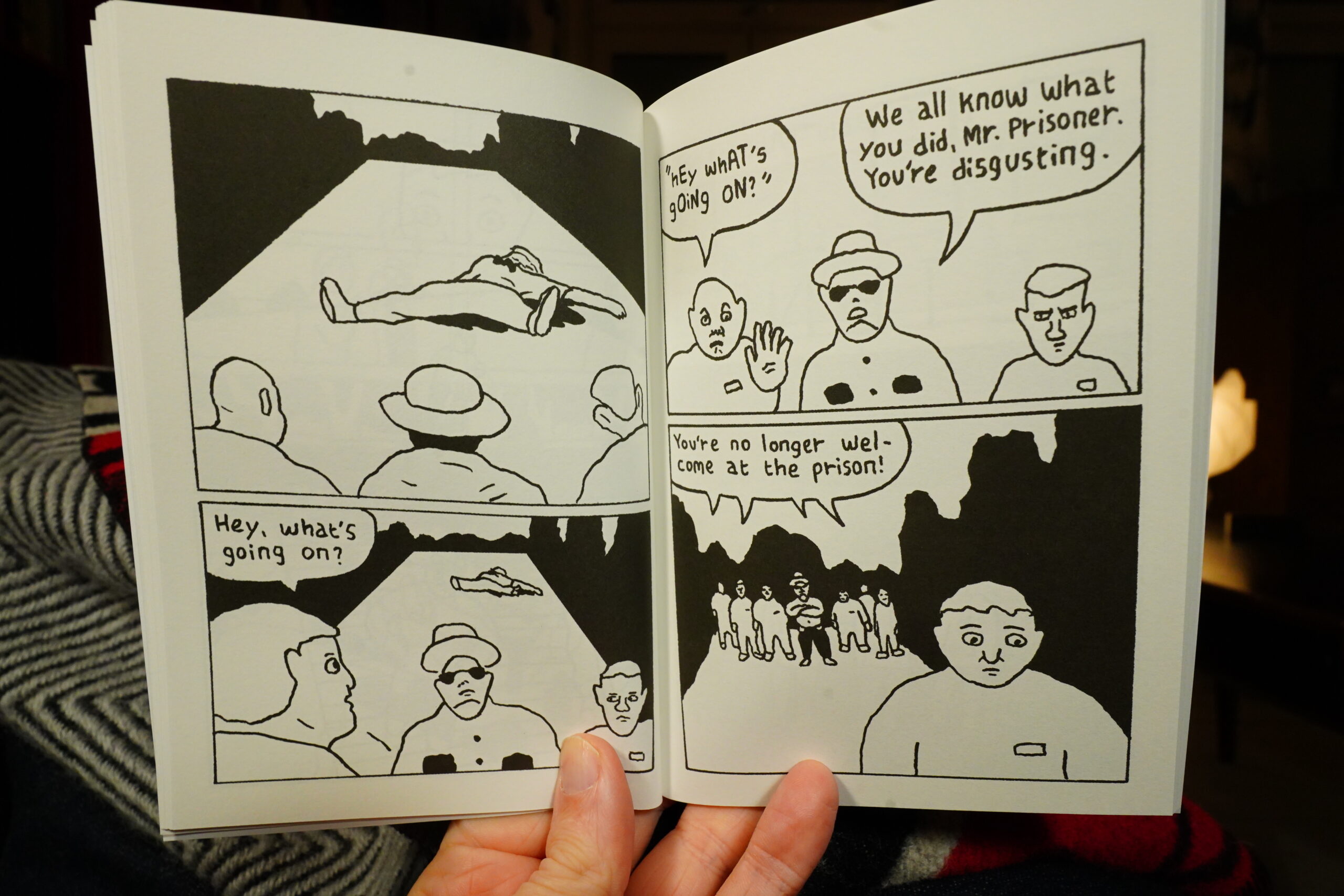
This is great. It’s a collection of dream stories — and unusually enough for these kinds of things, the stories seem genuinely dream-like. Many of these scenes make me go “yes! that’s what a dream is like!”
| David Allred: The Beautiful World |  |
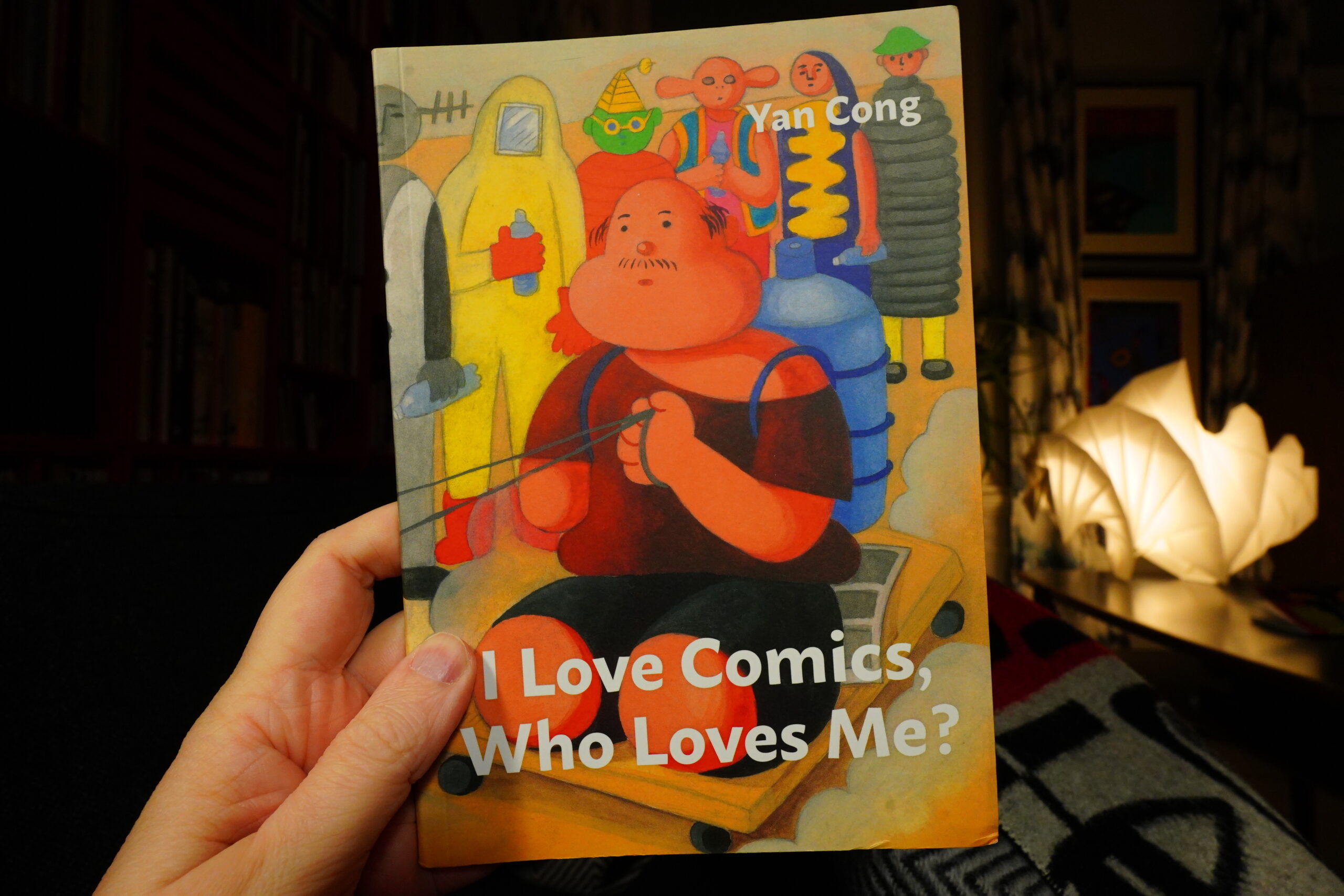
03:17: I Love Comics, Who Loves Me? by Yan Cong (Kuš)
The eternal question.
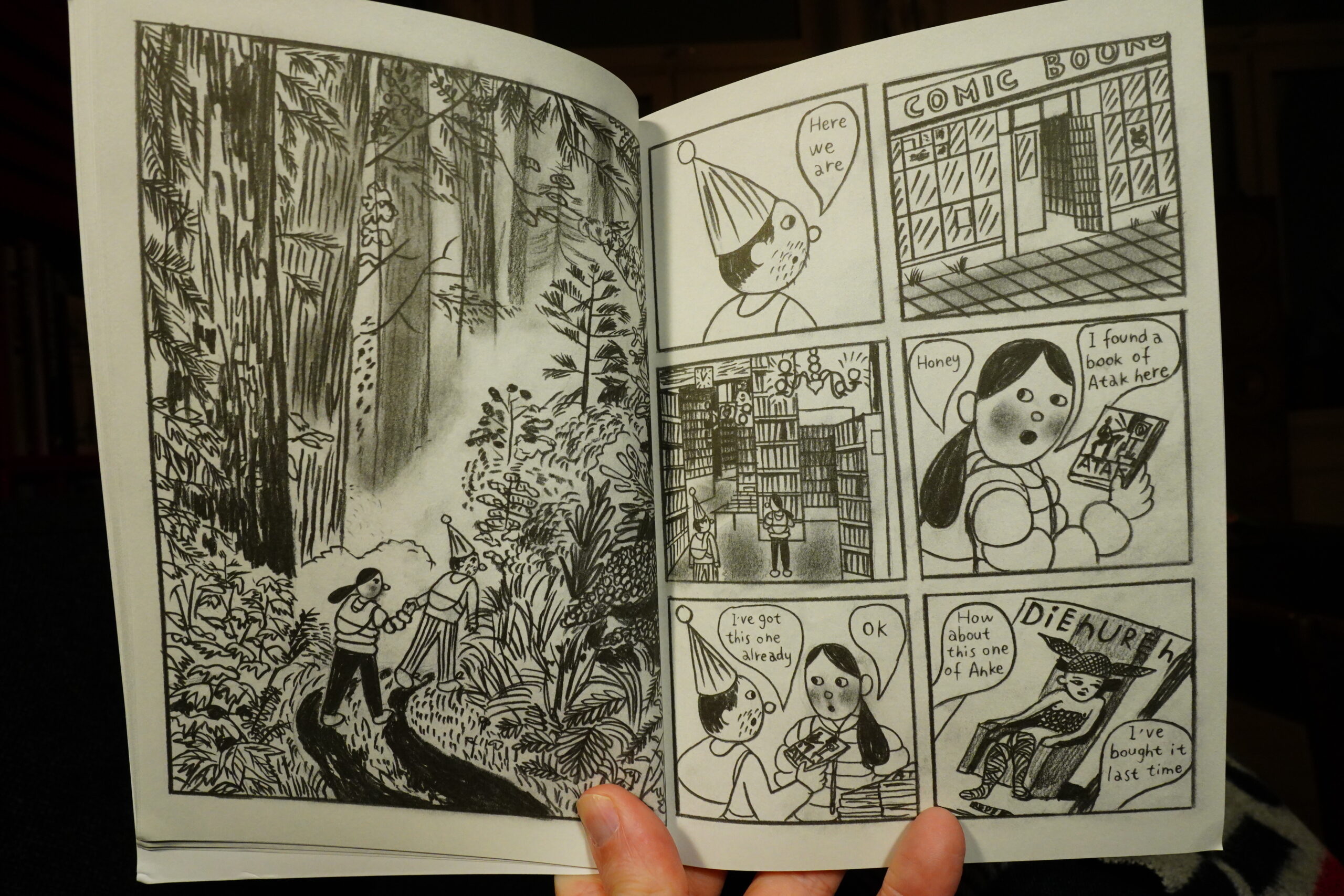
Hey! That’s a recurring dream of mine, too — finding my way to a comic book store and then browsing, usually finding fantastic comics, but sometimes not.

This book collects several shorter pieces — most of them are dream stories, but some (like the above) are not. Love the artwork here.
Speech balloon placement is pretty odd throughout — sometimes you’re supposed to read the speech balloons from left to right, and sometimes the opposite direction. I’m wondering whether some of these stories have been flopped or something?
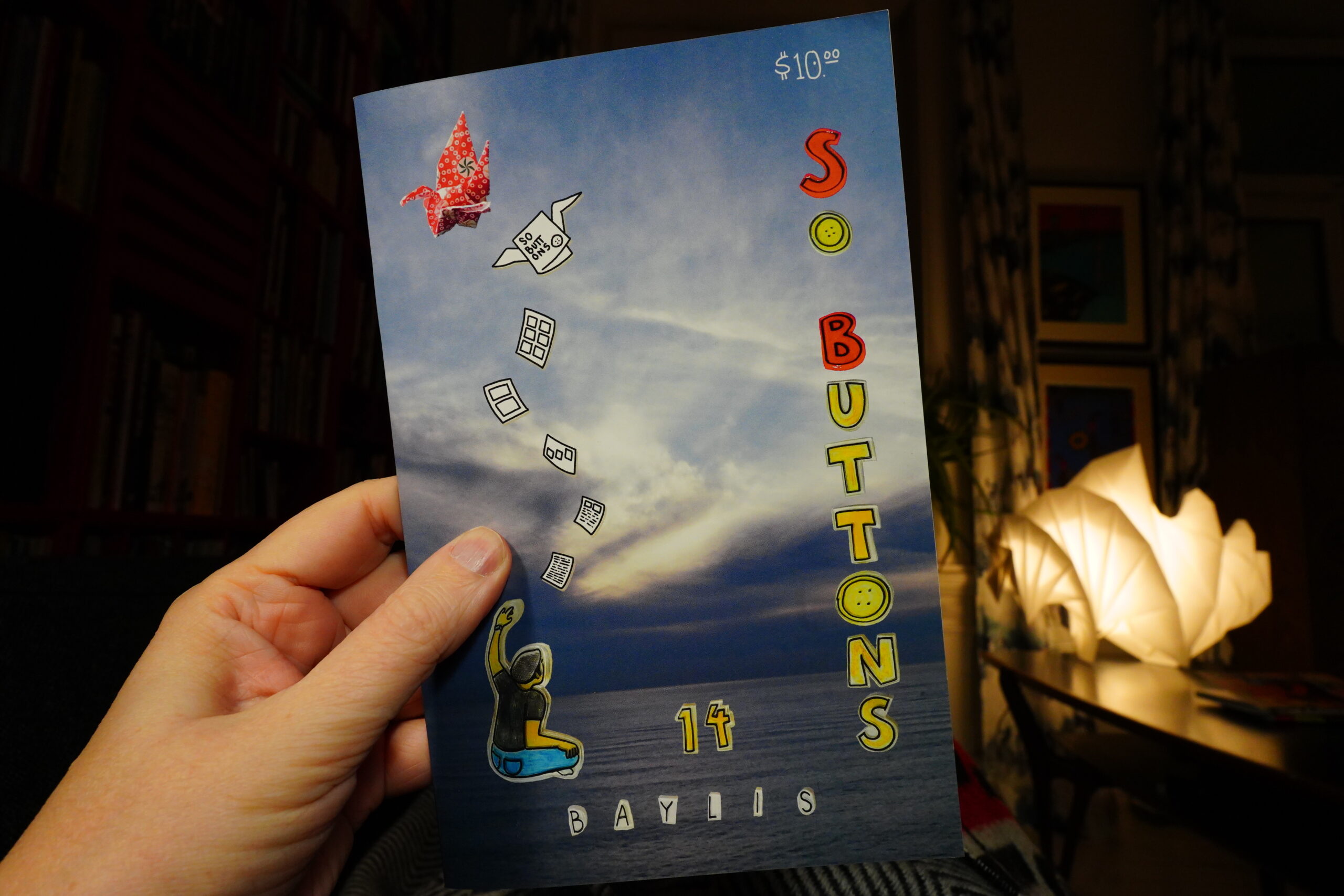
03:32: So Buttons #14 by Jonathan Baylis and others
I got this from here.

Cool — it comes with a nice origami bird.
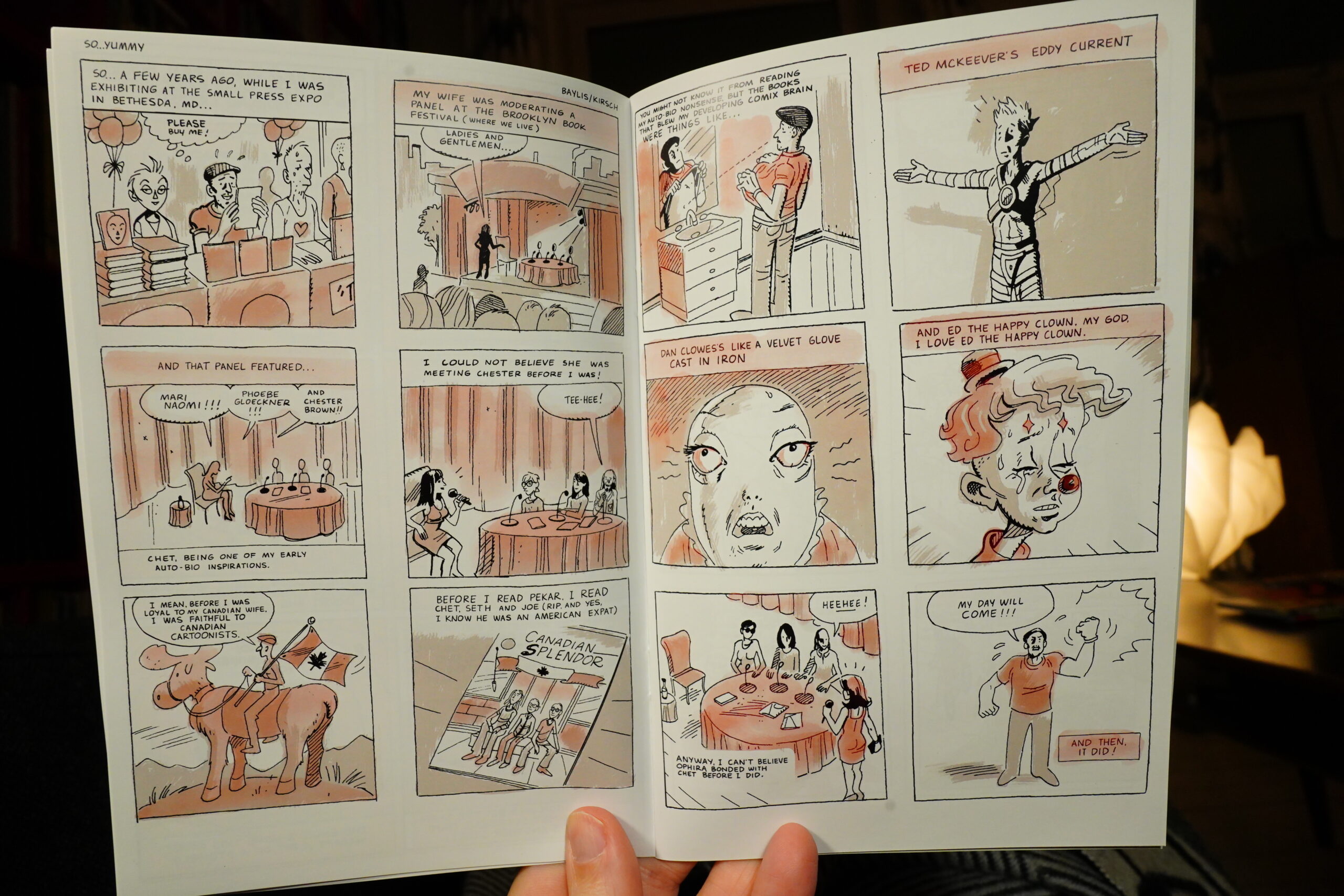
This is a collection of short autobio stories.

Some are amusing anecdotes, and some are heartbreaking. It’s a really strong issue — I like it.
| Jessica Pratt: Here In the Pitch |  |

03:51: Chest Face by Dean Haspiel
This is another kickstartererd book.
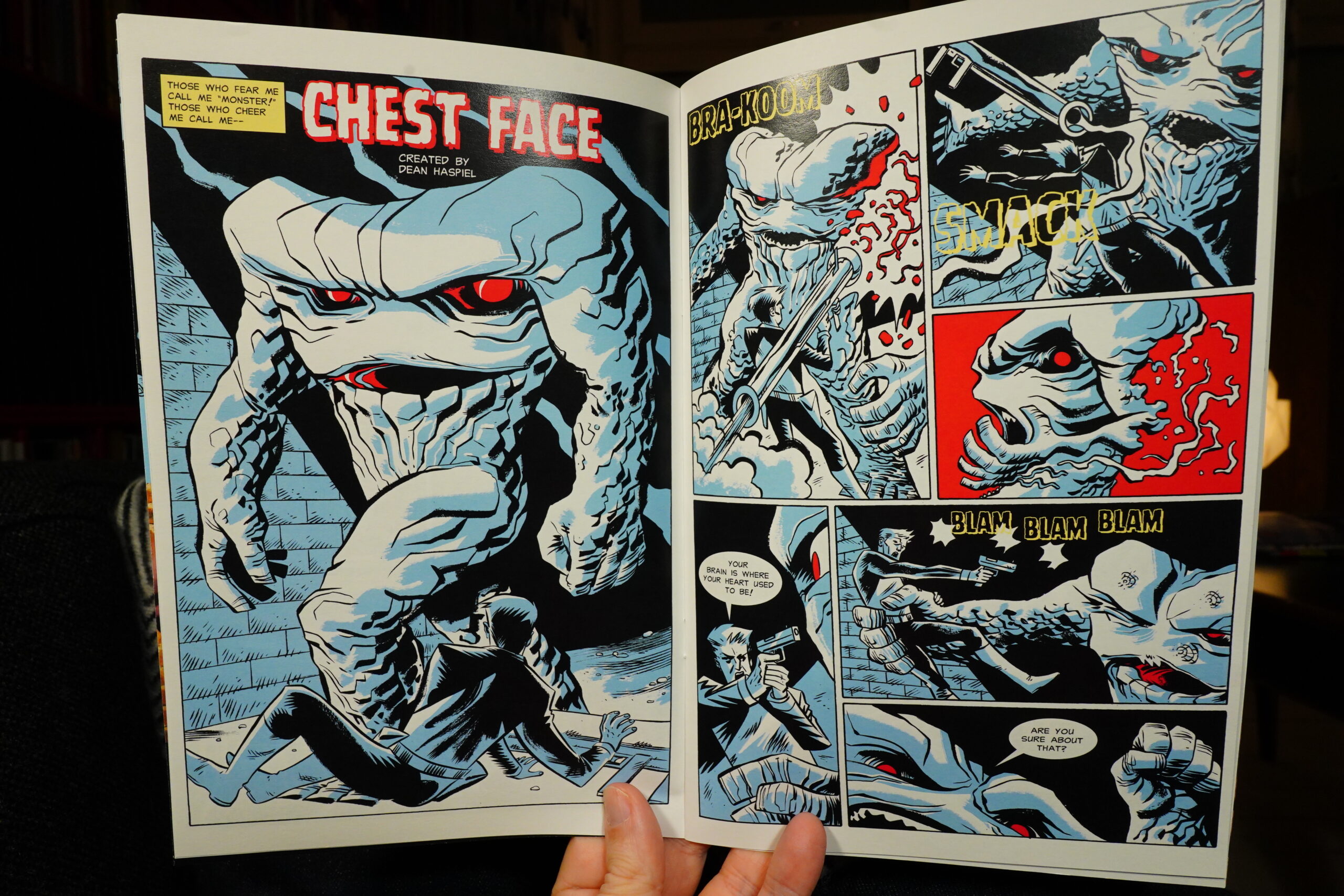
Haspiel’s artwork is sharp as usual.
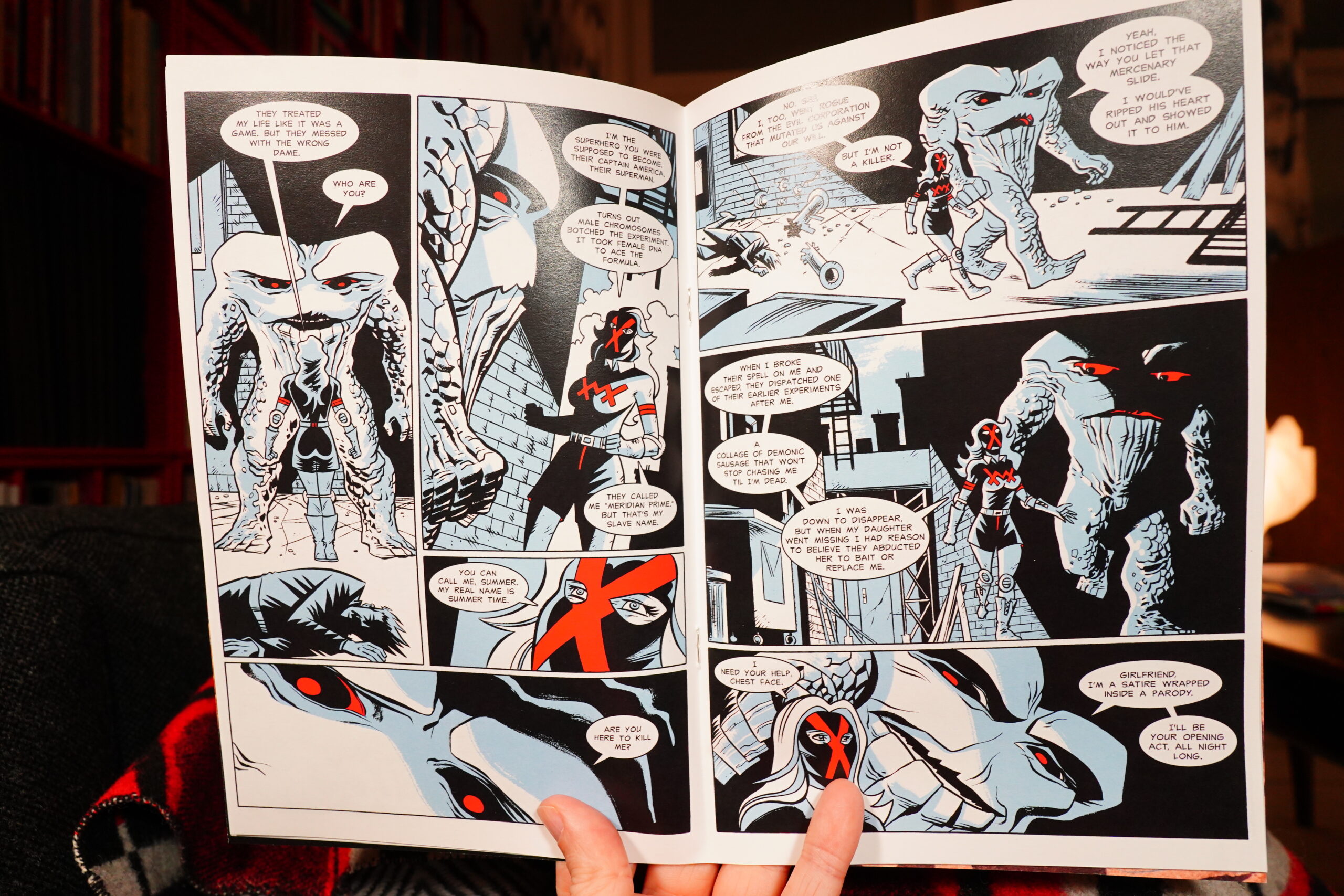
This is billed as a “satire”, and I guess so, but, uhm, it’s like… it’s not very funny? The comic seems to search for a reason to exist.
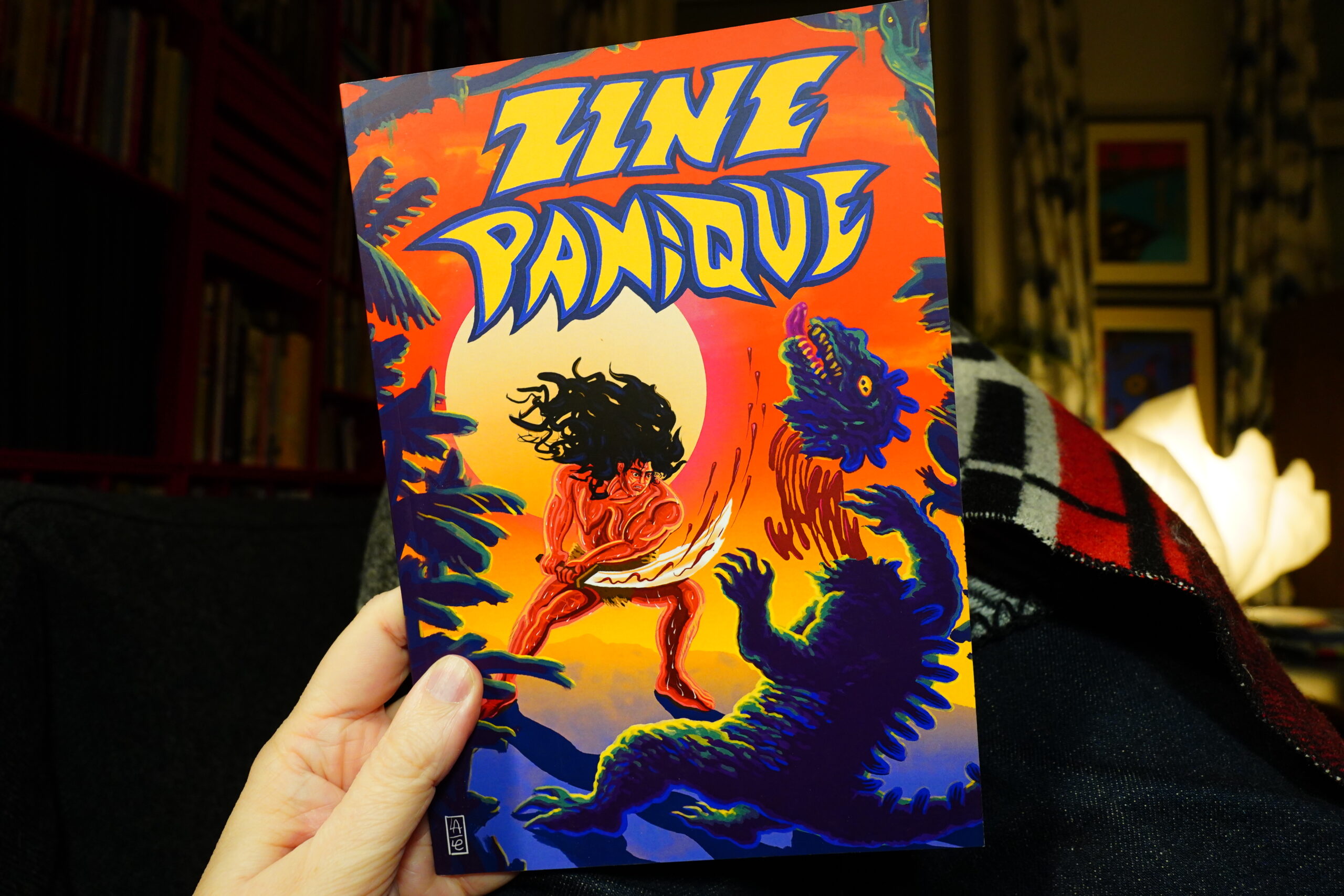
04:05: Zine Panique: épé et sorcellerie
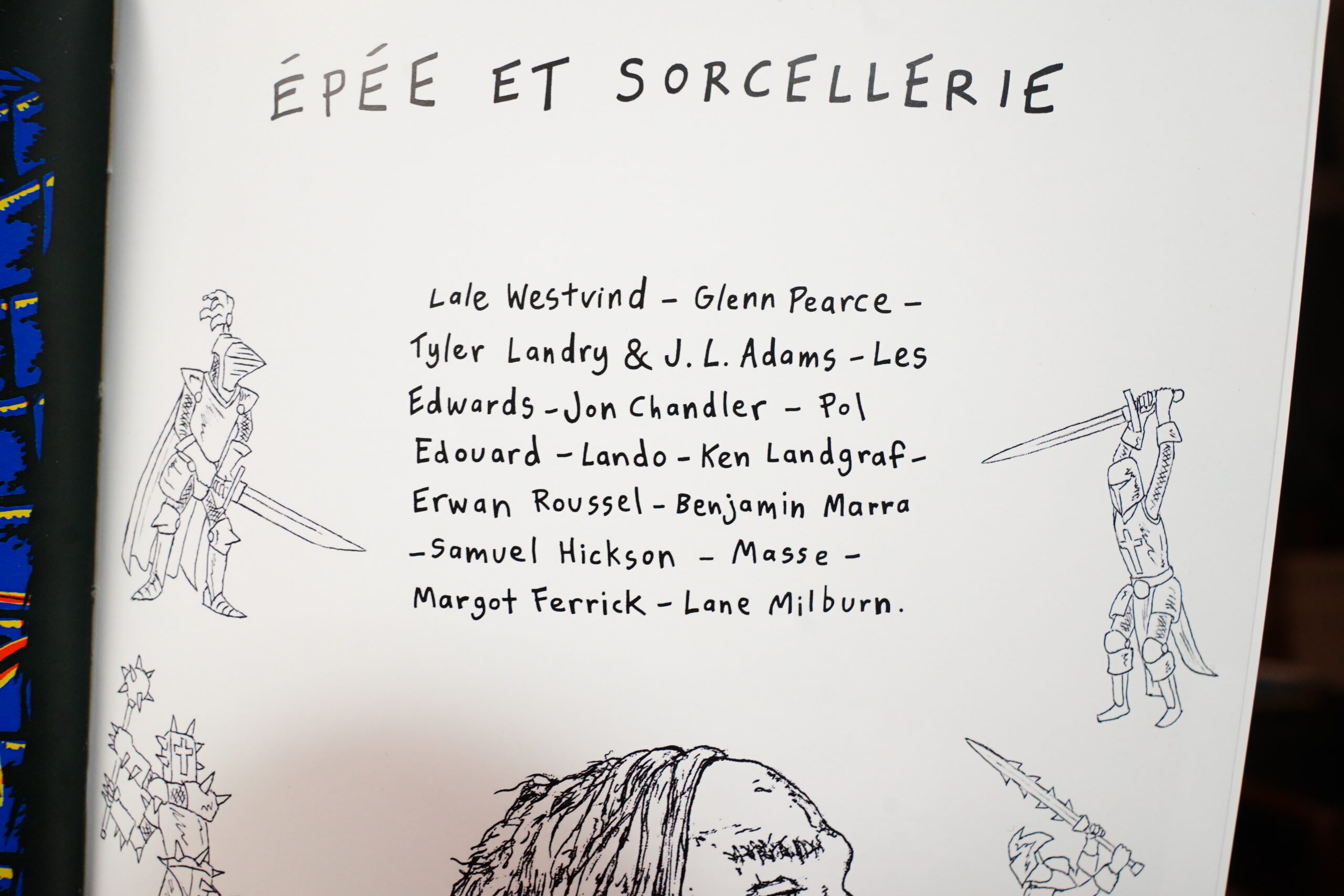
It has these people.

So the theme this issue is sword & sorcery…
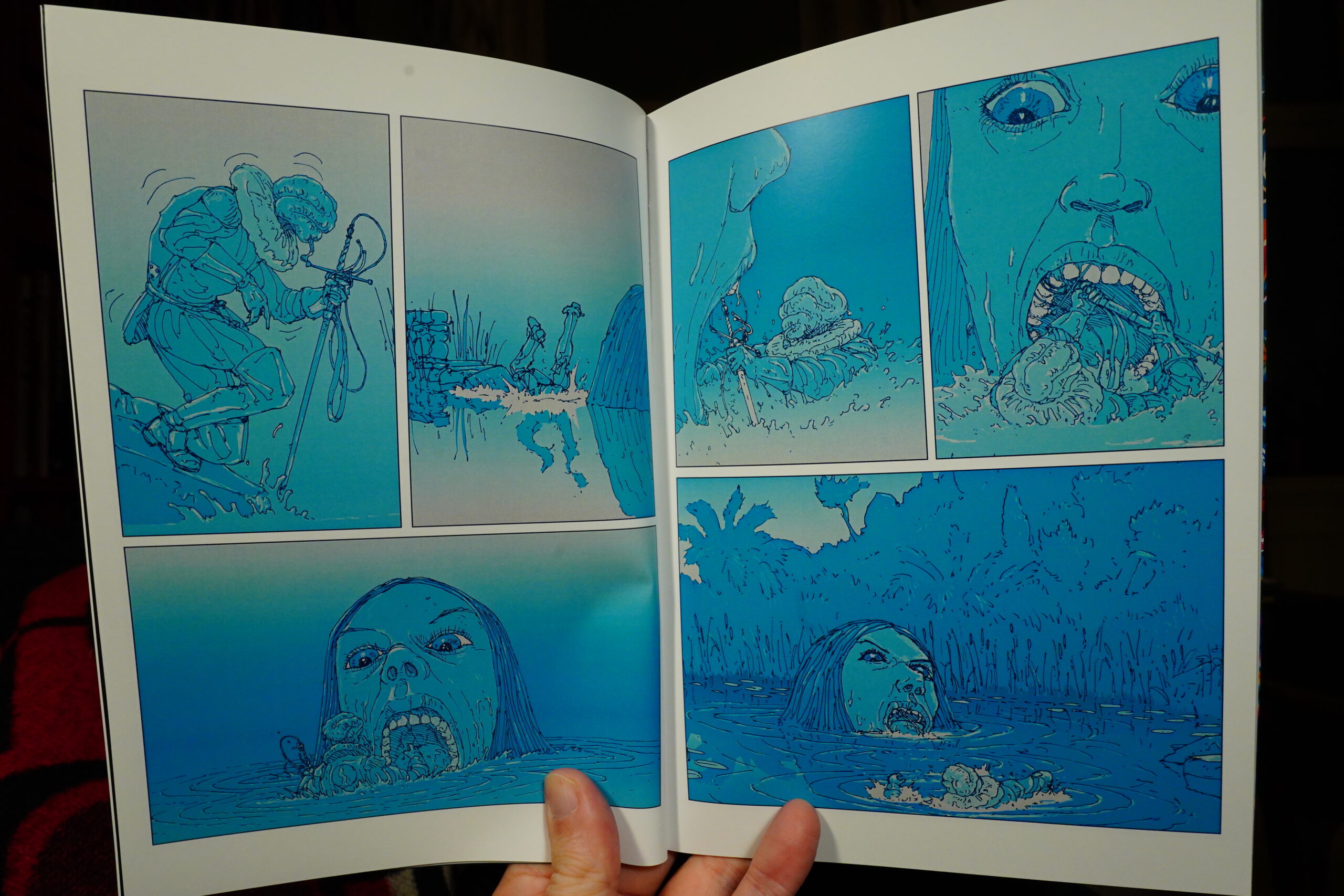
… but I guess not strictly.

Most of the pieces are in English (or are silent), but there’s one in French (about a very tired magician).
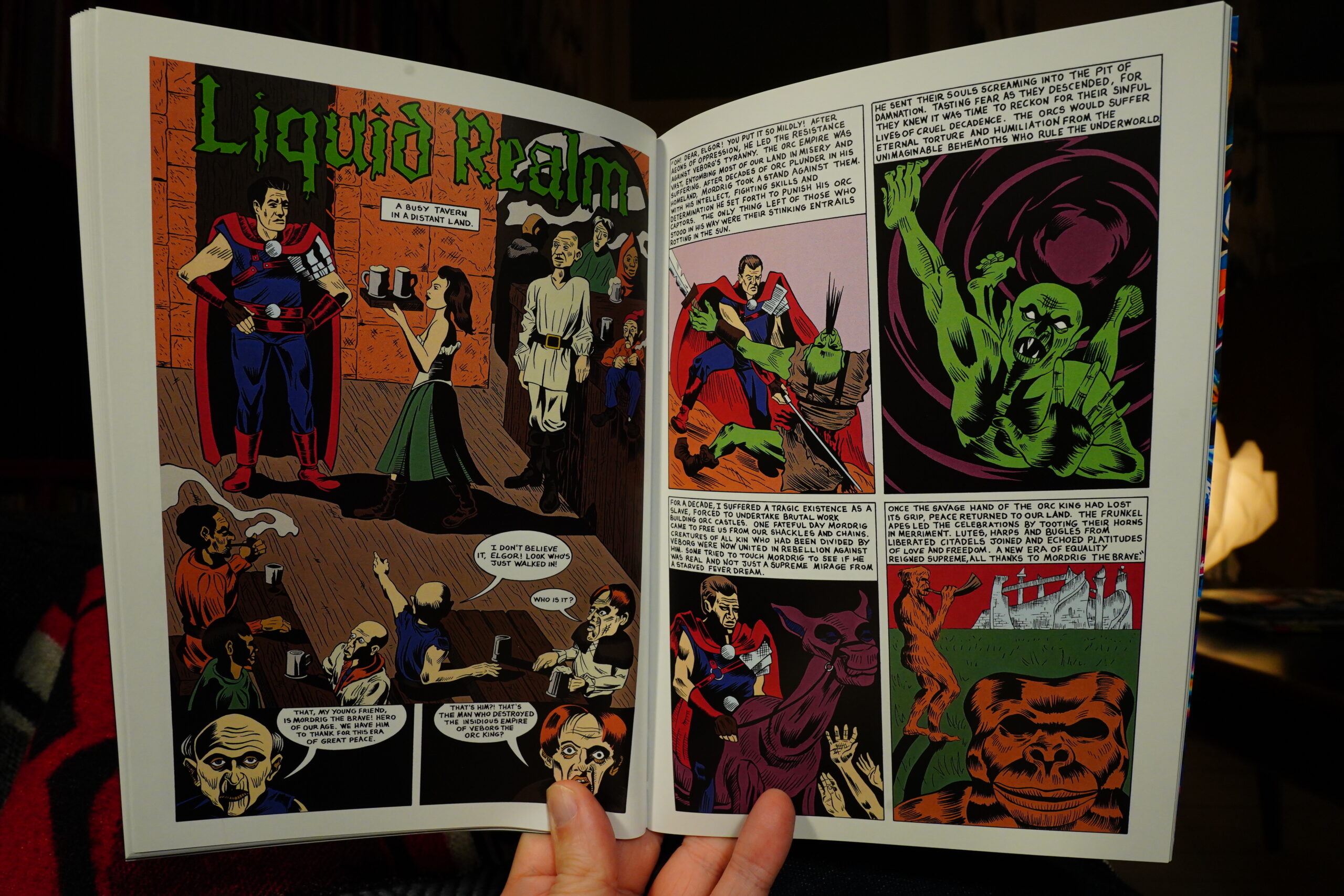
I dunno… most of these are parodies, I guess, but… not that funny? It’s like most of these artists don’t really have much feeling, one way or another, for the subject matter, so the pieces don’t feel very, er, necessary.
| Tristwch Y Fenywod: Tristwch Y Fenywod |  |
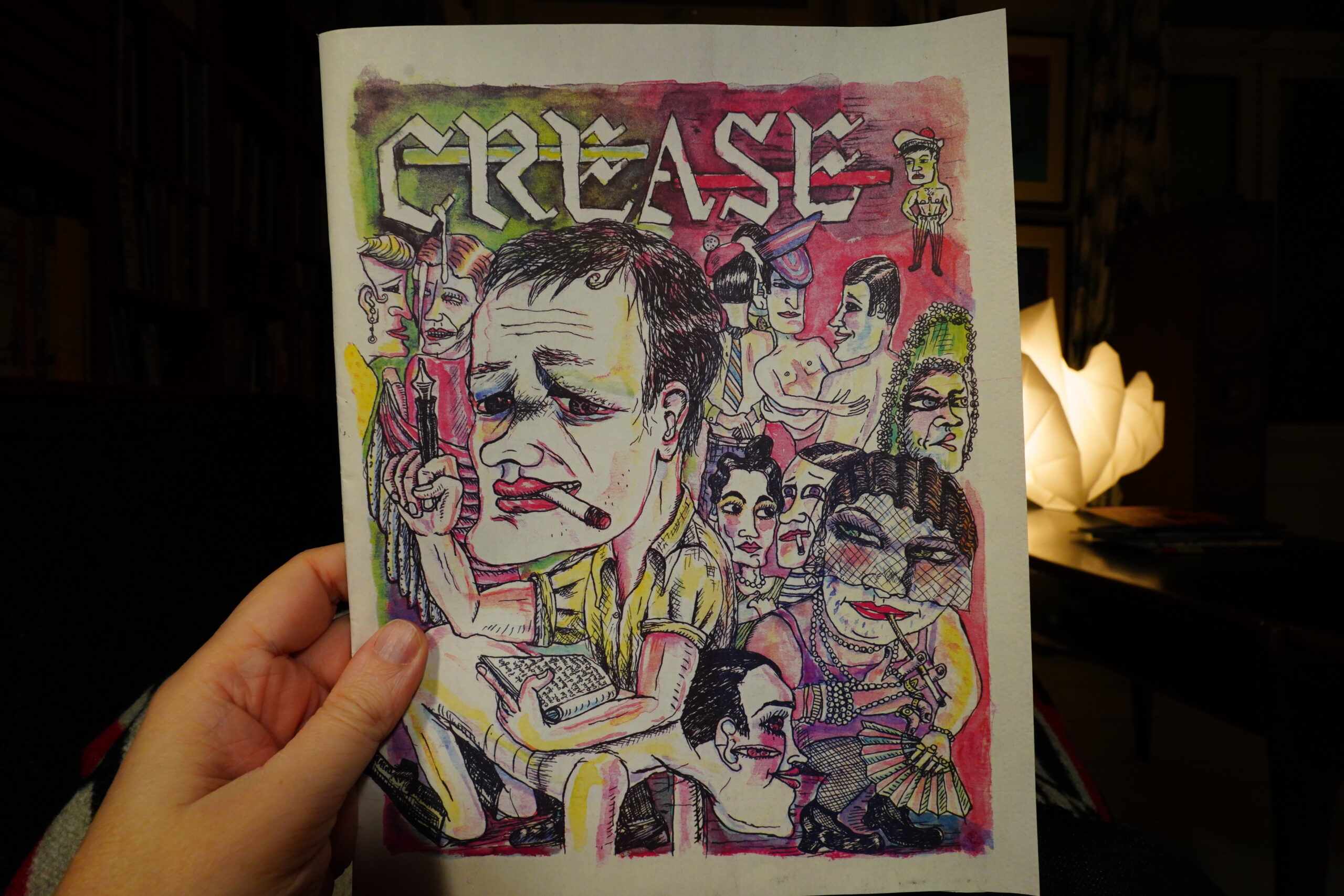
04:26: Crease #1 by Austin English (Domino Books)

An all star lineup adapts various texts — I guess the theme is “transgression” or something?
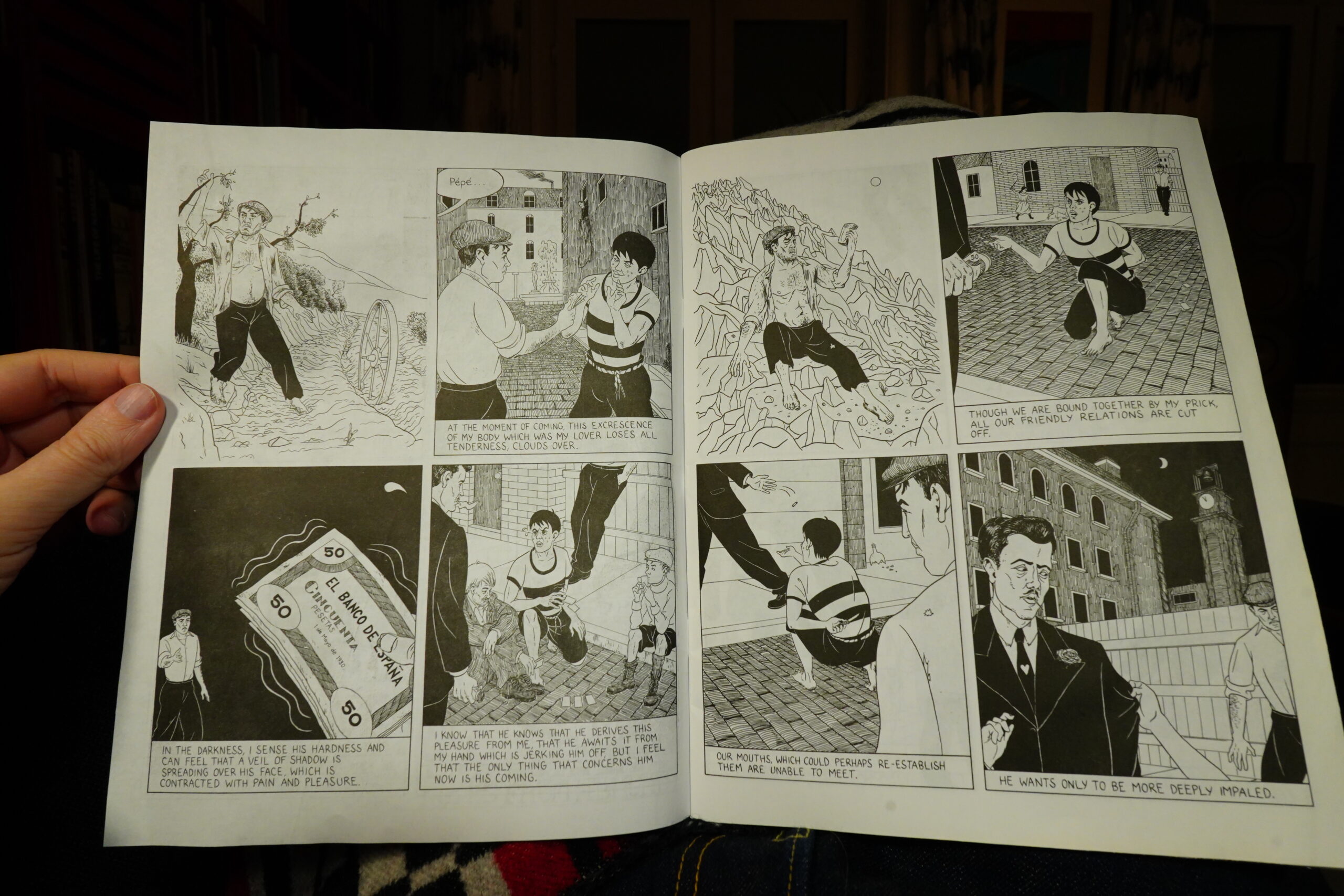
Hankiewicz on Genet is great.
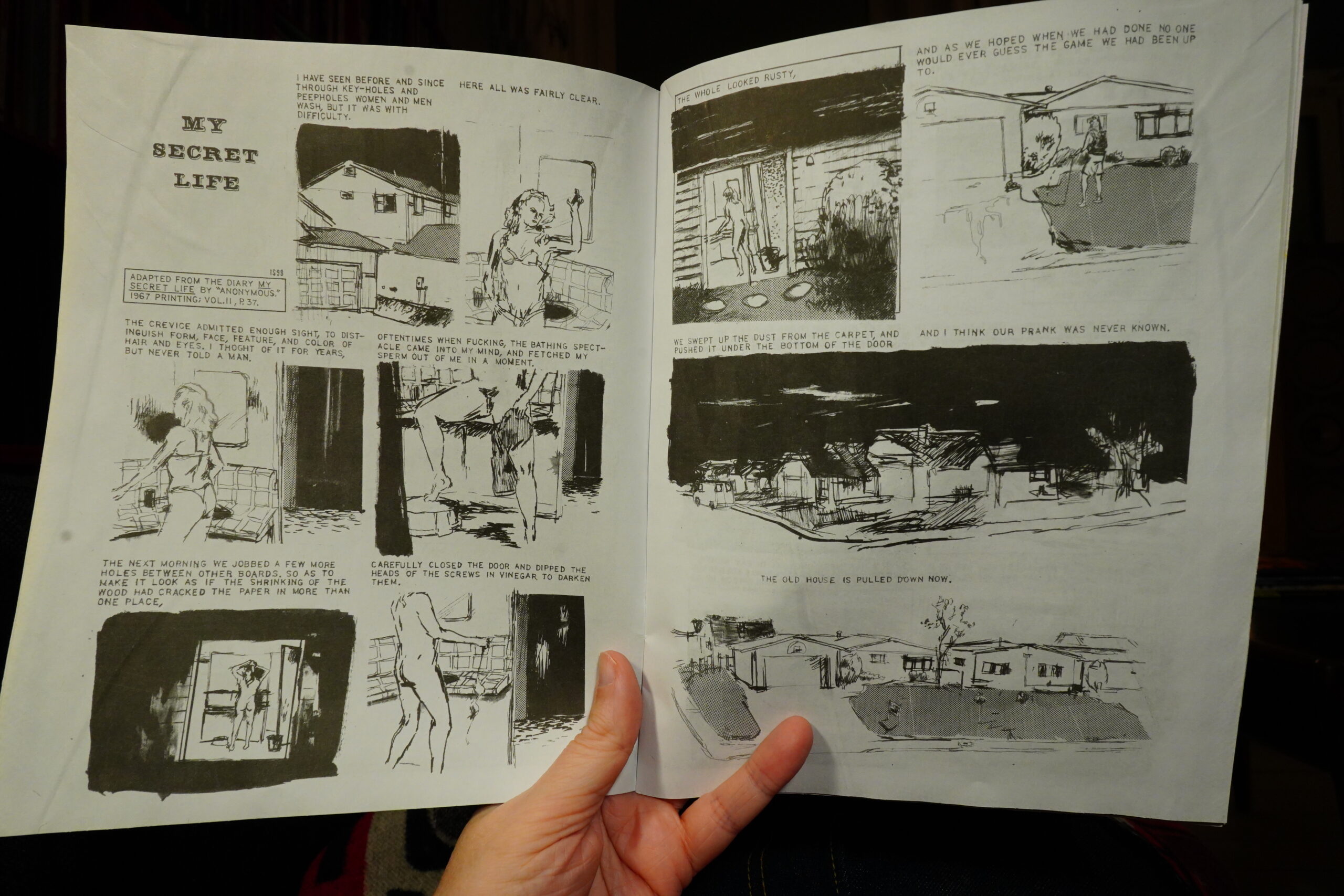
I feel like I’ve seen the Ian Sundahl/Anonymous strips before? Or… some other excerpts from My Secret Life? They seem familiar somehow…
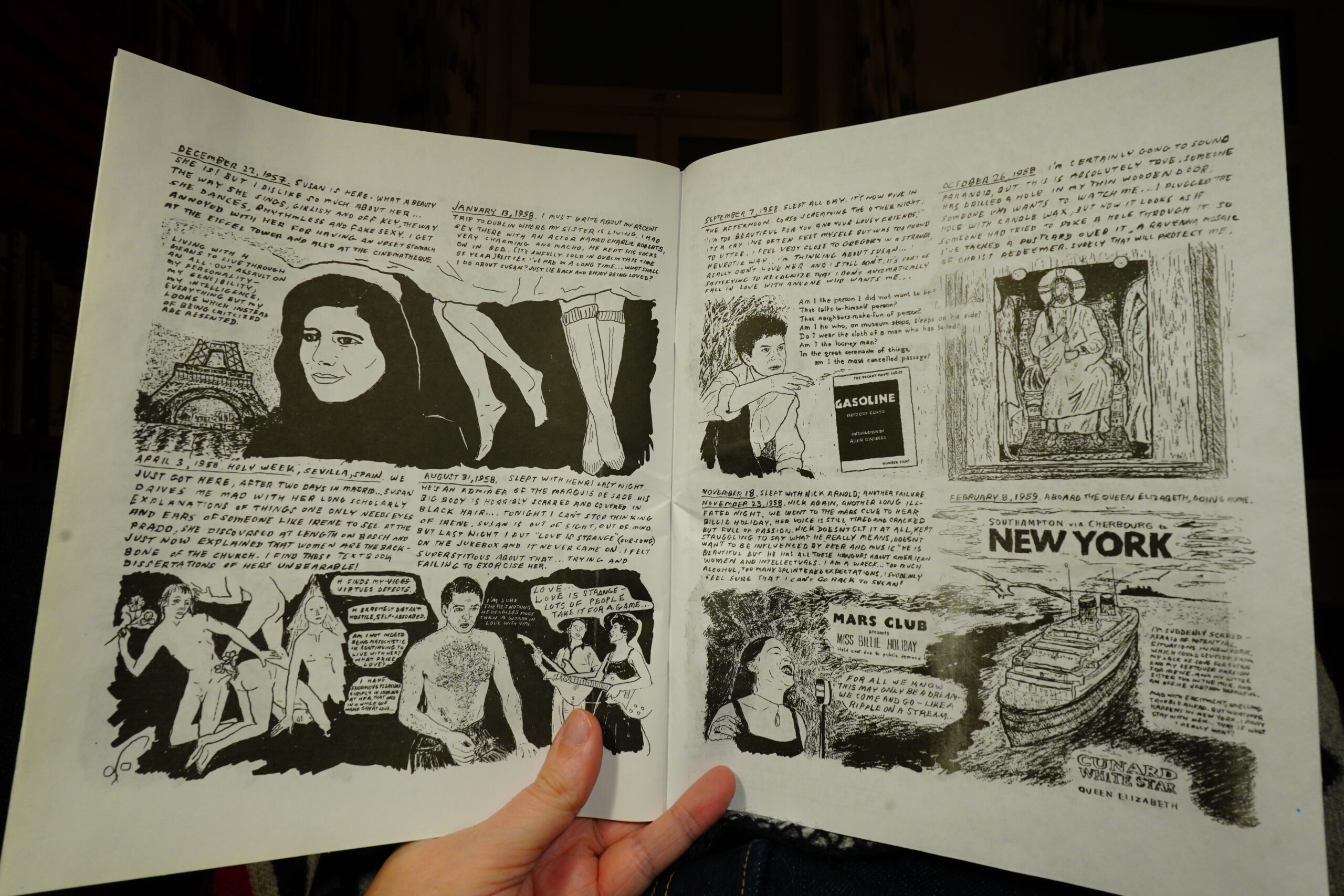
It’s a good issue, and I think E.A. Bethea’s piece is perhaps the most compelling.
| Kreidler: Hands |  |
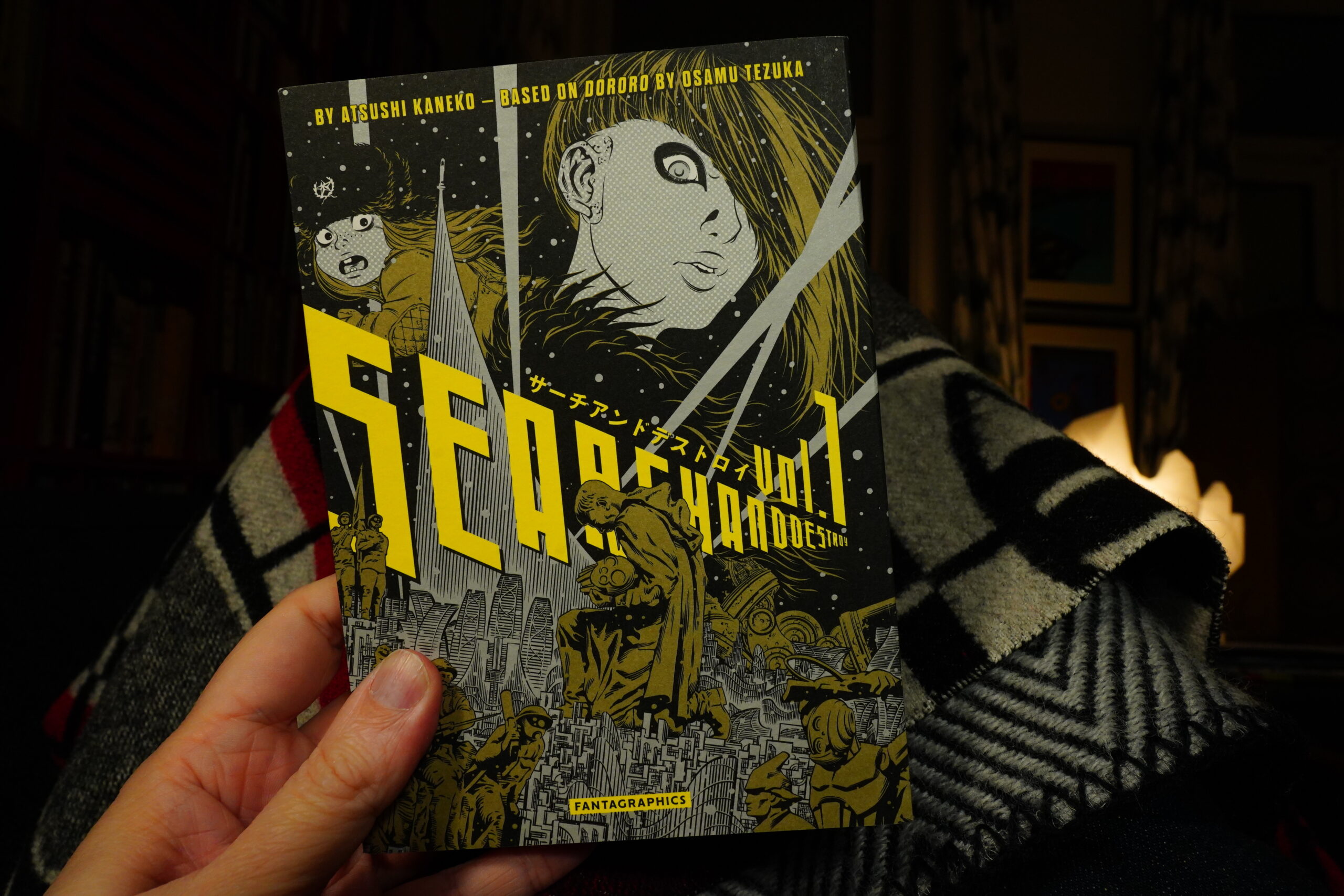
04:59: Search & Destroy by Atsushi Kaneko (Fantagraphics)
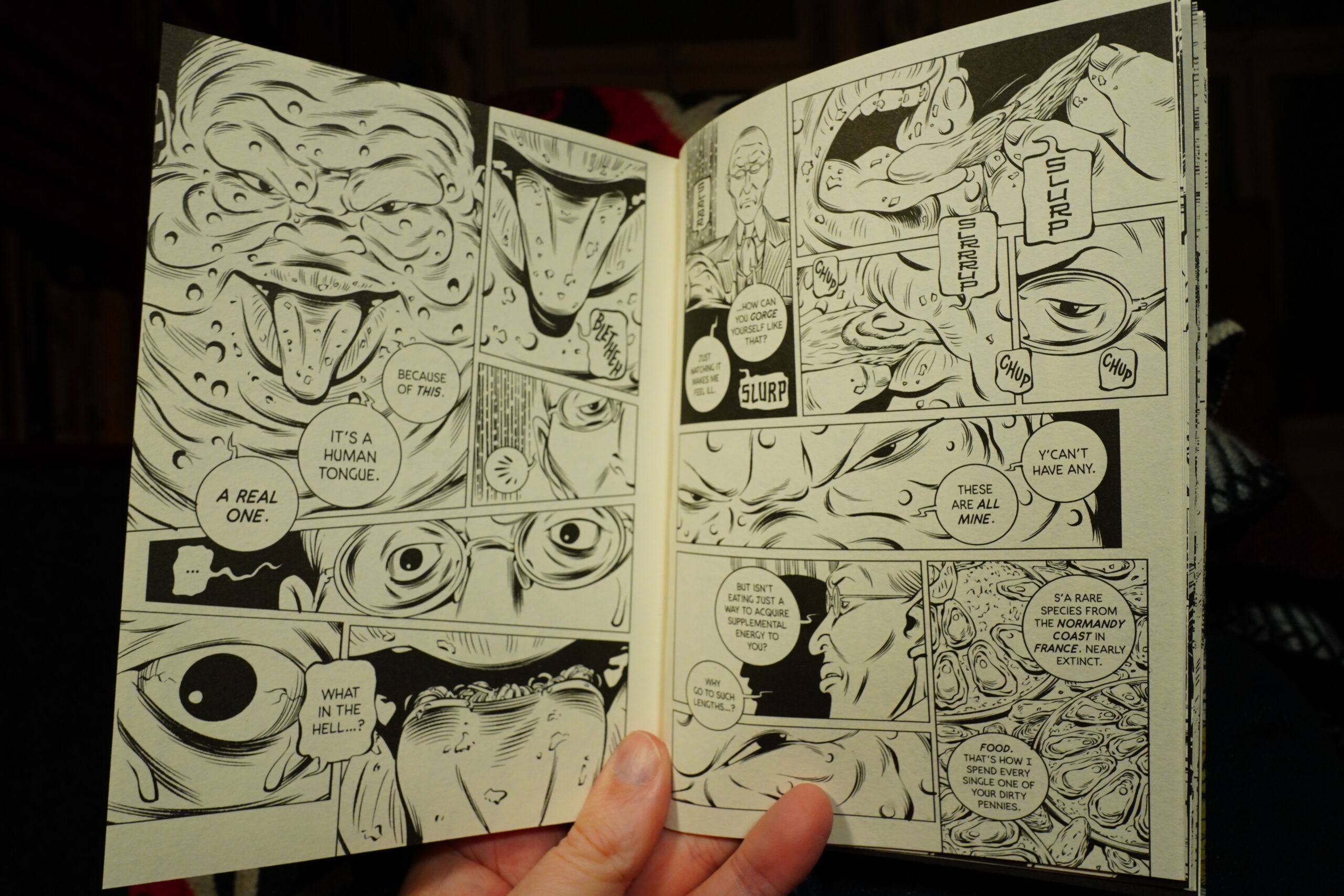
This seemed kind of interesting at the start — mostly because of the over-the-top frantic storytelling — but the story is basically “collect all the jewels”, only here it’s a person collecting 48 body parts that have been stolen from her. This is apparently an adaptation? based on? an old Tezuka serial? So that makes sense.
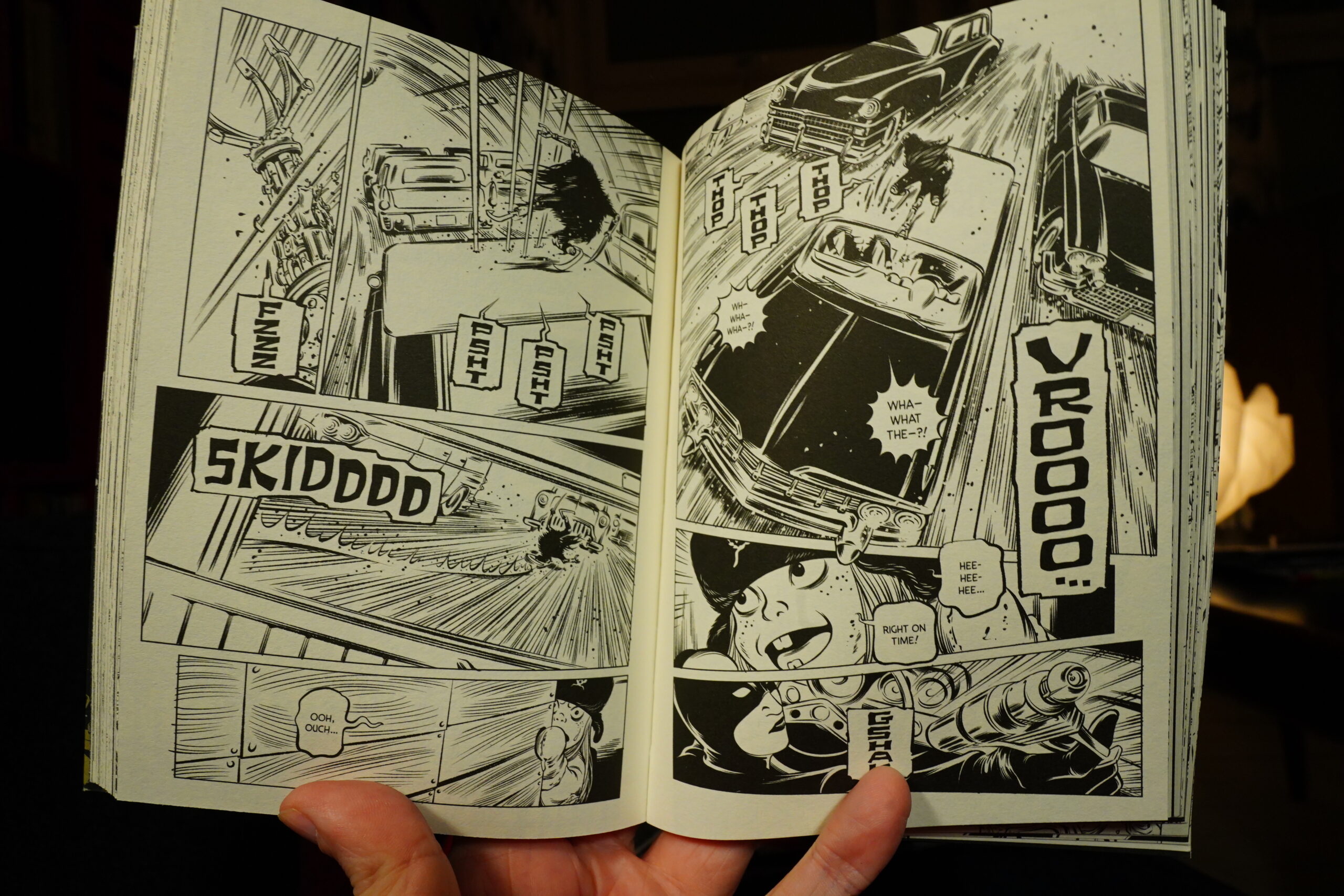
It’s even got a child sidekick.

The pages sometimes veer towards a kind of Yuichi Yokoyama-ness, but er not as good. But then again, is anything?
I found this book kinda tedious, and perhaps I should take a nap now.
| The Sound: Jeopardy |  |
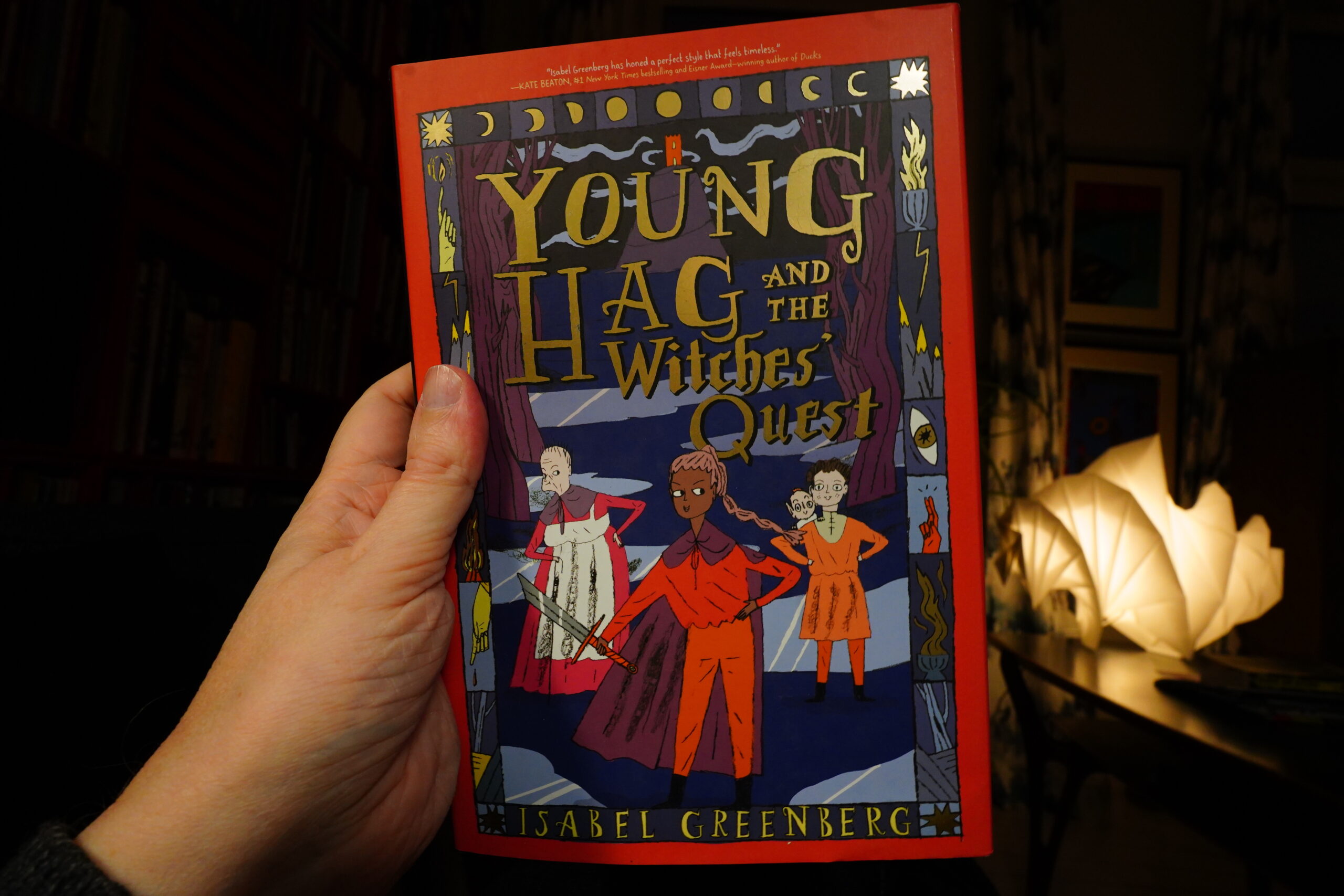
07:01: Young Hag and the Witches’ Quest by Isabel Greenberg (Abrams)
This was on the TCJ Best Of list, so I bought it.
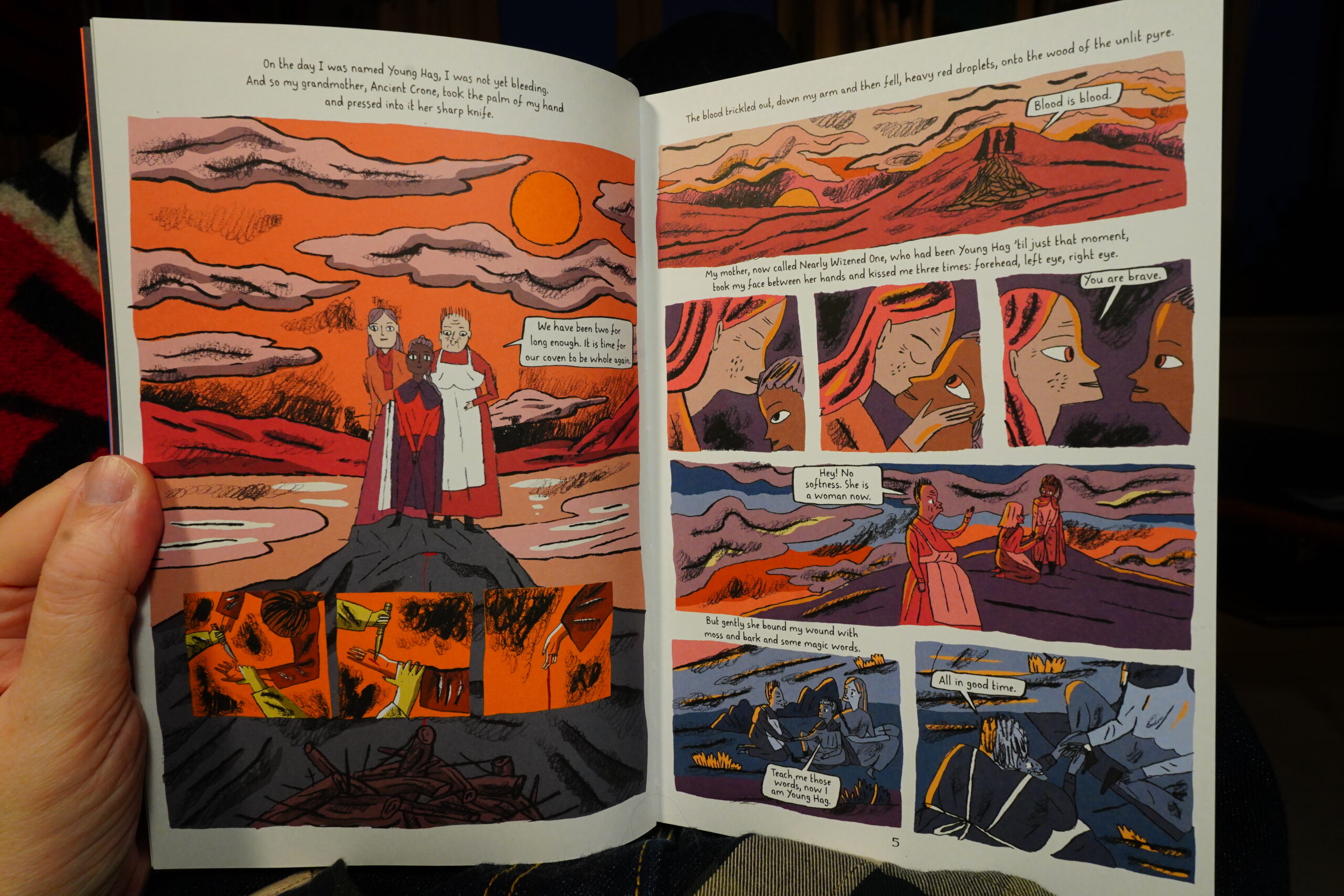
This isn’t exactly my favourite art style…
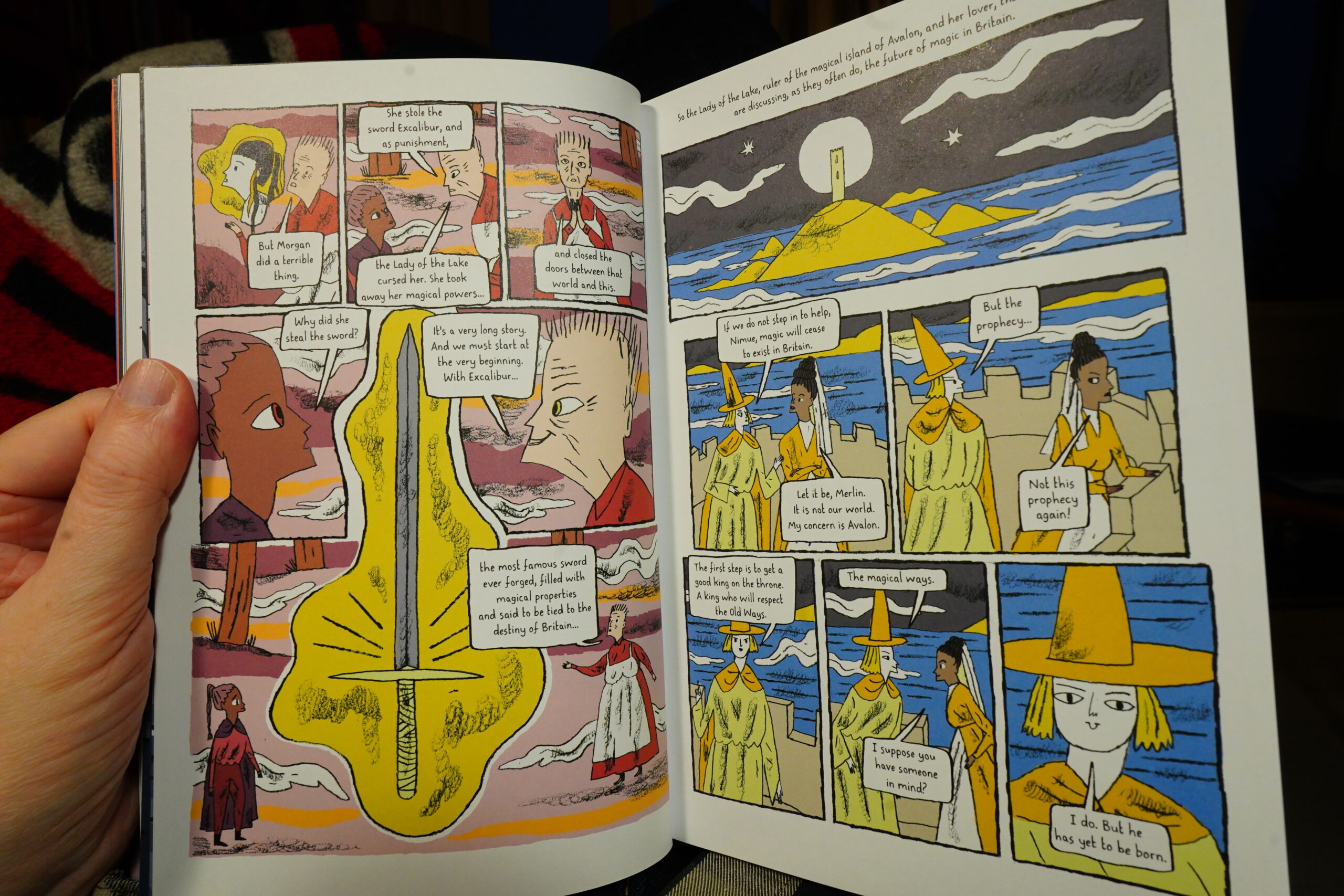
And with the Obligatory Limited & Desaturated Colour Palette it doesn’t exactly sing.
| The Wolfgang Press: A 2nd Shape |  |
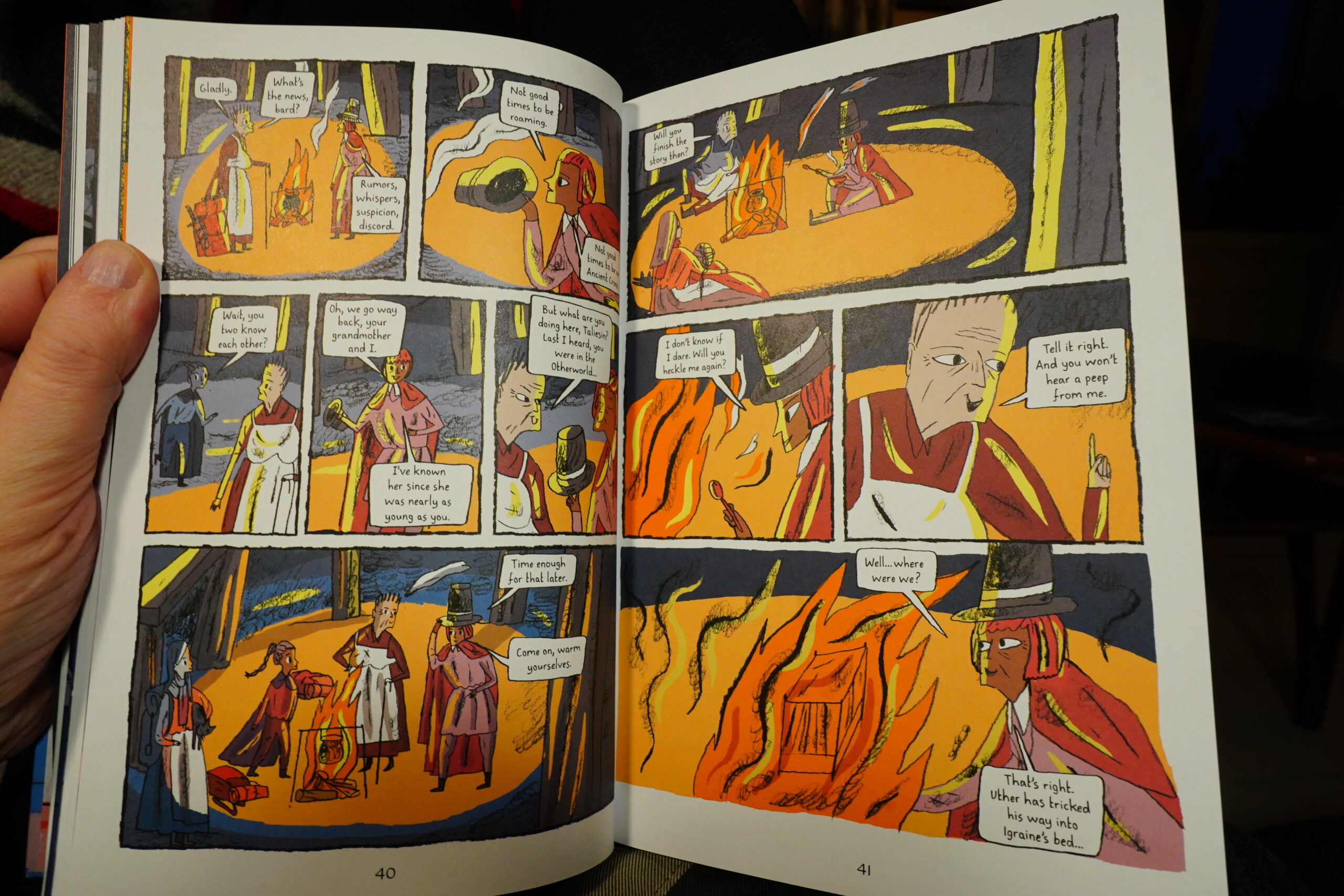
I’m mostly just annoyed with the binding — it’s so tight that whenever there’s frequently speech balloons hidden in the gutter and you have to beeeend and struggle with the book to actually read it. And this is an Abrams book! If they printed hardback novels with this kind of shoddy book design work there’d be riots!

But I mean… I guess it’s OK? Would I have liked it more if I were 12? If I’d never read any Camelot stories before? (Oh, I forgot to mention that this retells the entire Morgana le Fay/Merlin/etc story.) Eh. Probably not, but I would have finished it, at least. I ditched this half way through, because I’m just not all that interested.
| Tarwater: Nuts of Ay |  |

07:58: Tif et Tondu: L’assassin des trois villes sœurs by Lapière & Sikorski (Zoom)
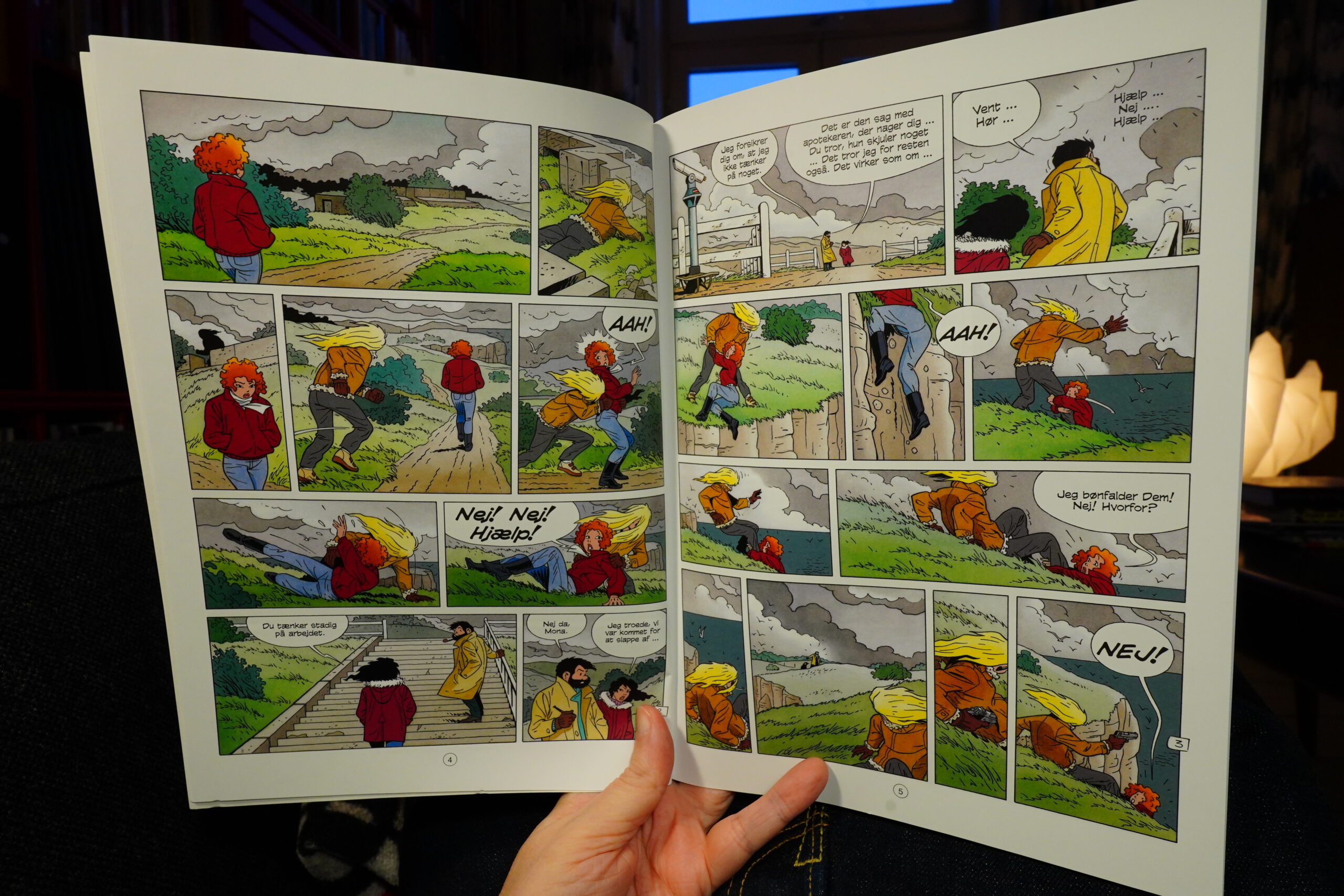
This is surprisingly good.
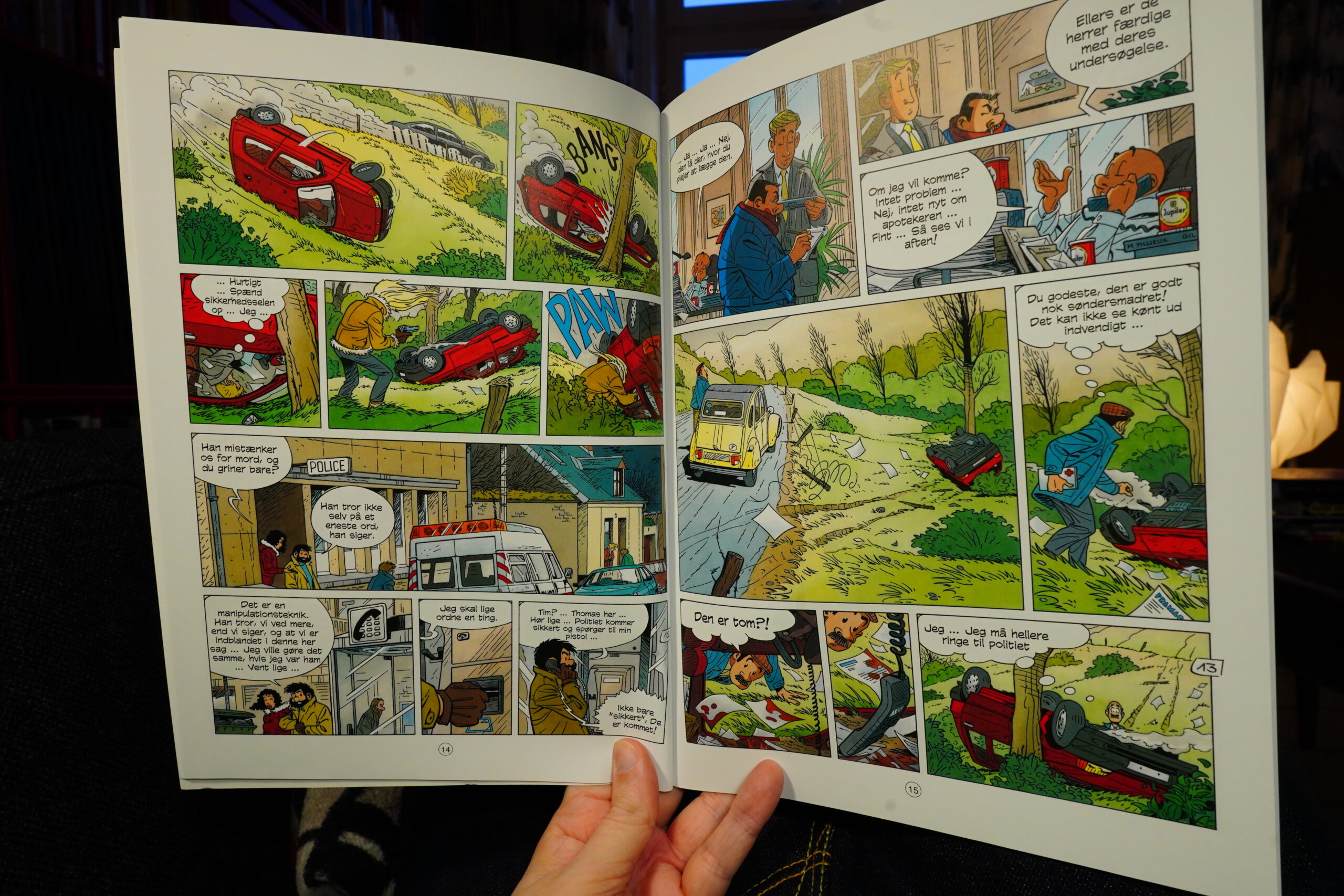
It’s like a real mystery/action/thriller kind of thing, with a twisty ending and all.
| The Weather Station: Humanhood |  |

08:36: Les trembles by Thomas Merceron (Quintal éditions)
This is a very handsome book… I bought it from here.

Is that a sketch? Nice!
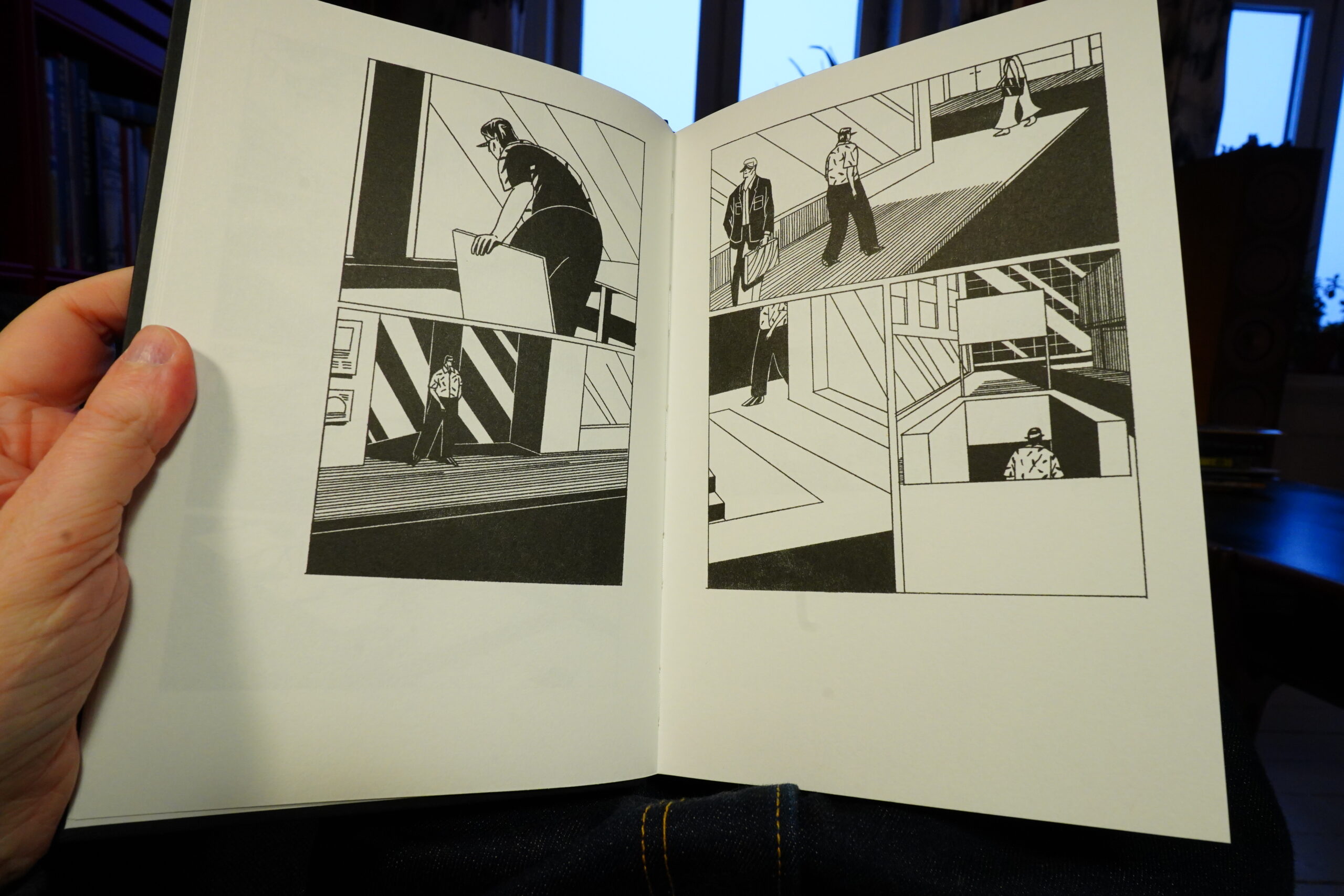
Ooh, I like this…
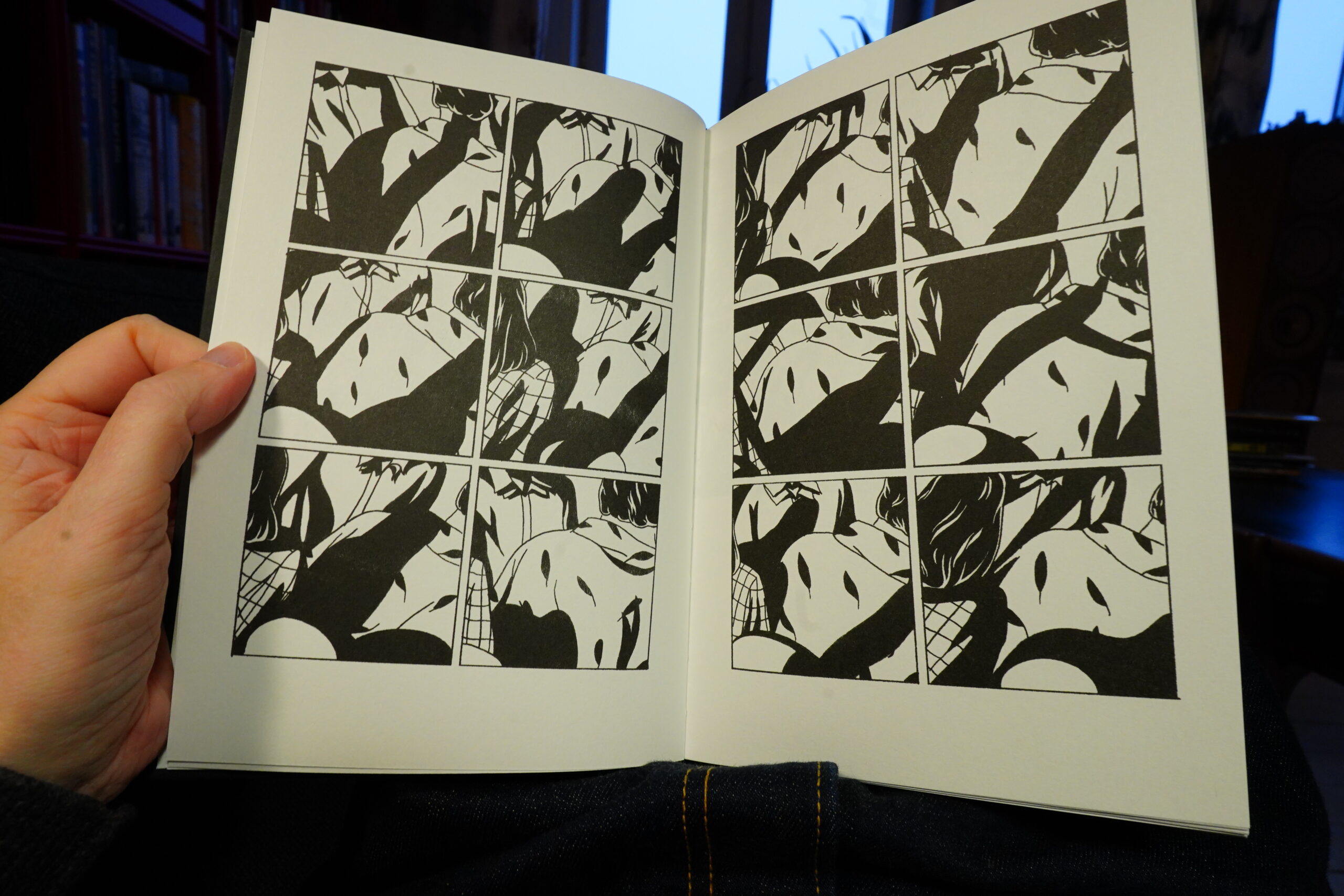
It’s very Yuichi Yokoyama — but this time around, not as copied gestures, but integral to the book.
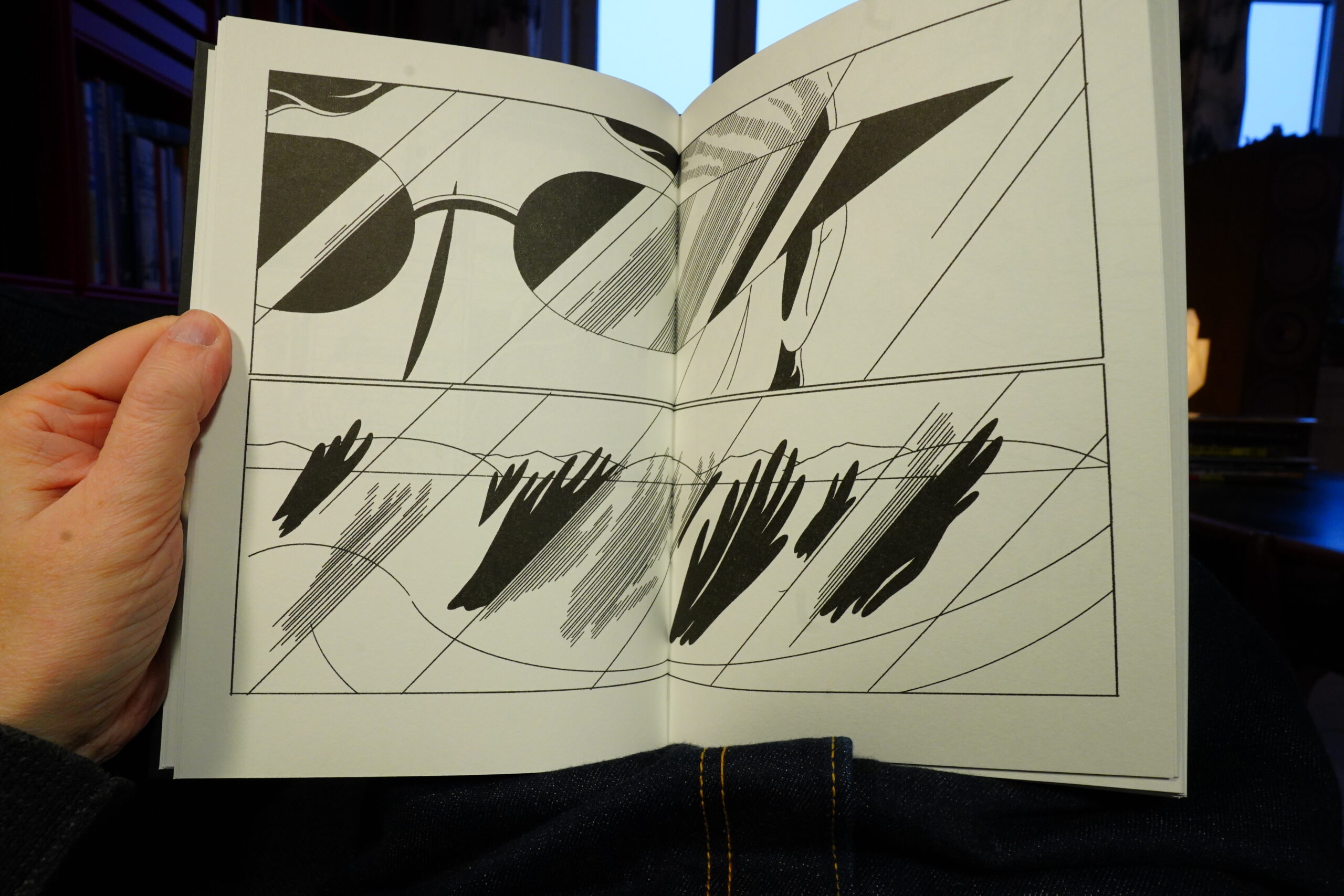
It’s fantastic!
The (wordless) story is very simple, really — a man goes on a trip to the countryside, and then goes back home and cooks dinner. And it’s riveting!

It goes from very macro (the galaxy) to very micro (atoms), and it’s kind of oddly moving? Ace!
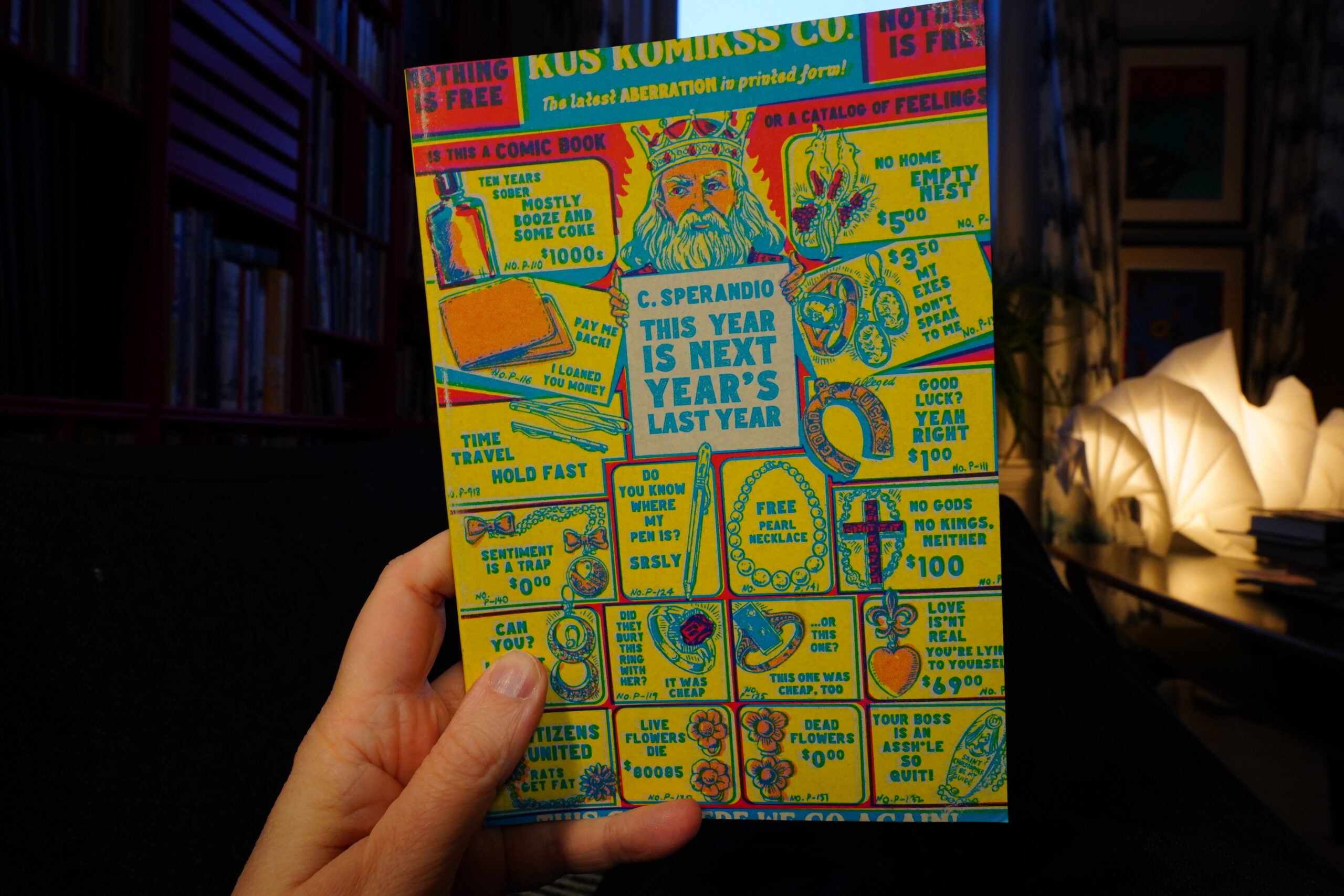
08:51: This Year Is Next Year’s Last Year by C. Sperandio (Kuš)
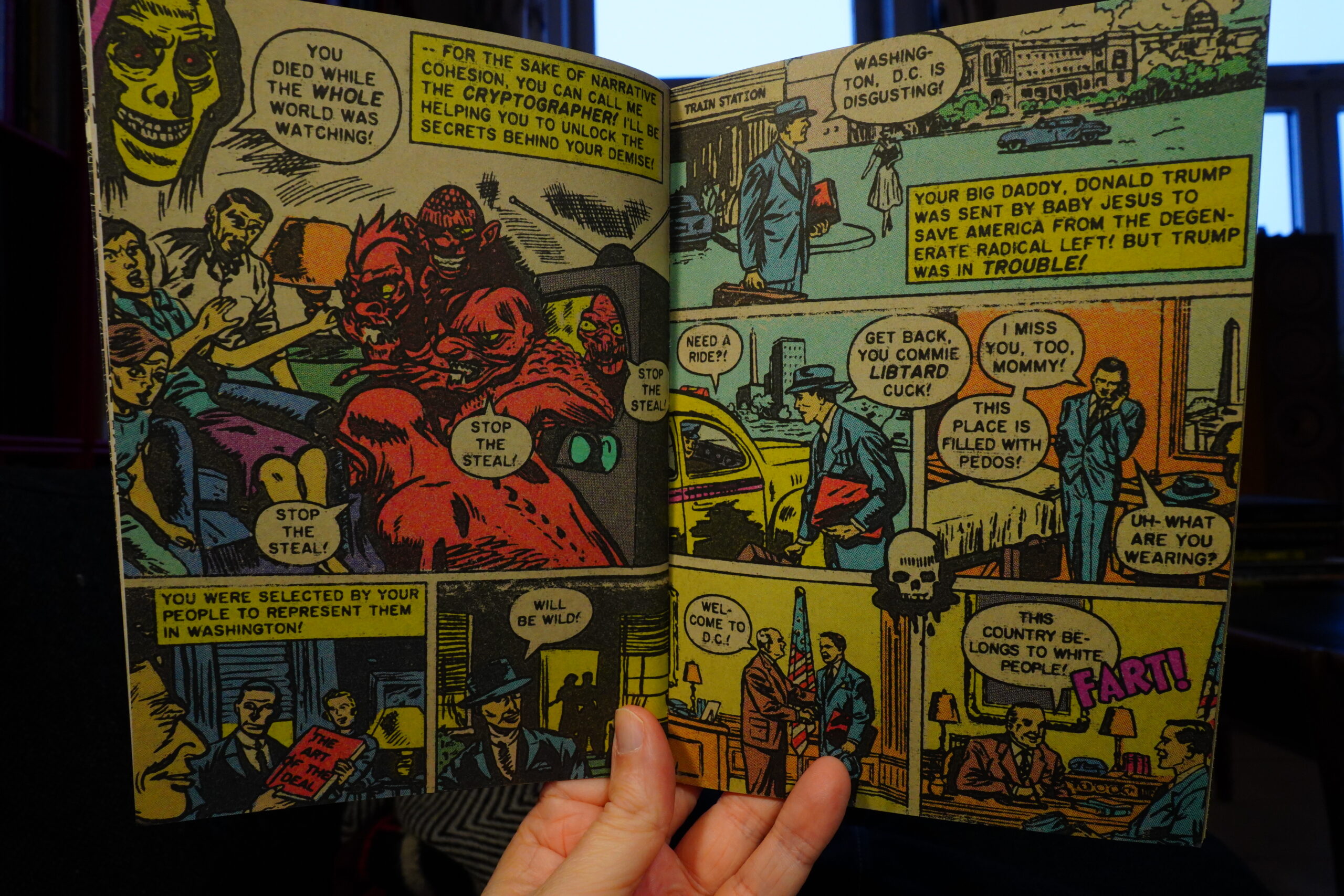
This is one of those books where they’ve put new text in an old comic (and edited it some). It’s well done.
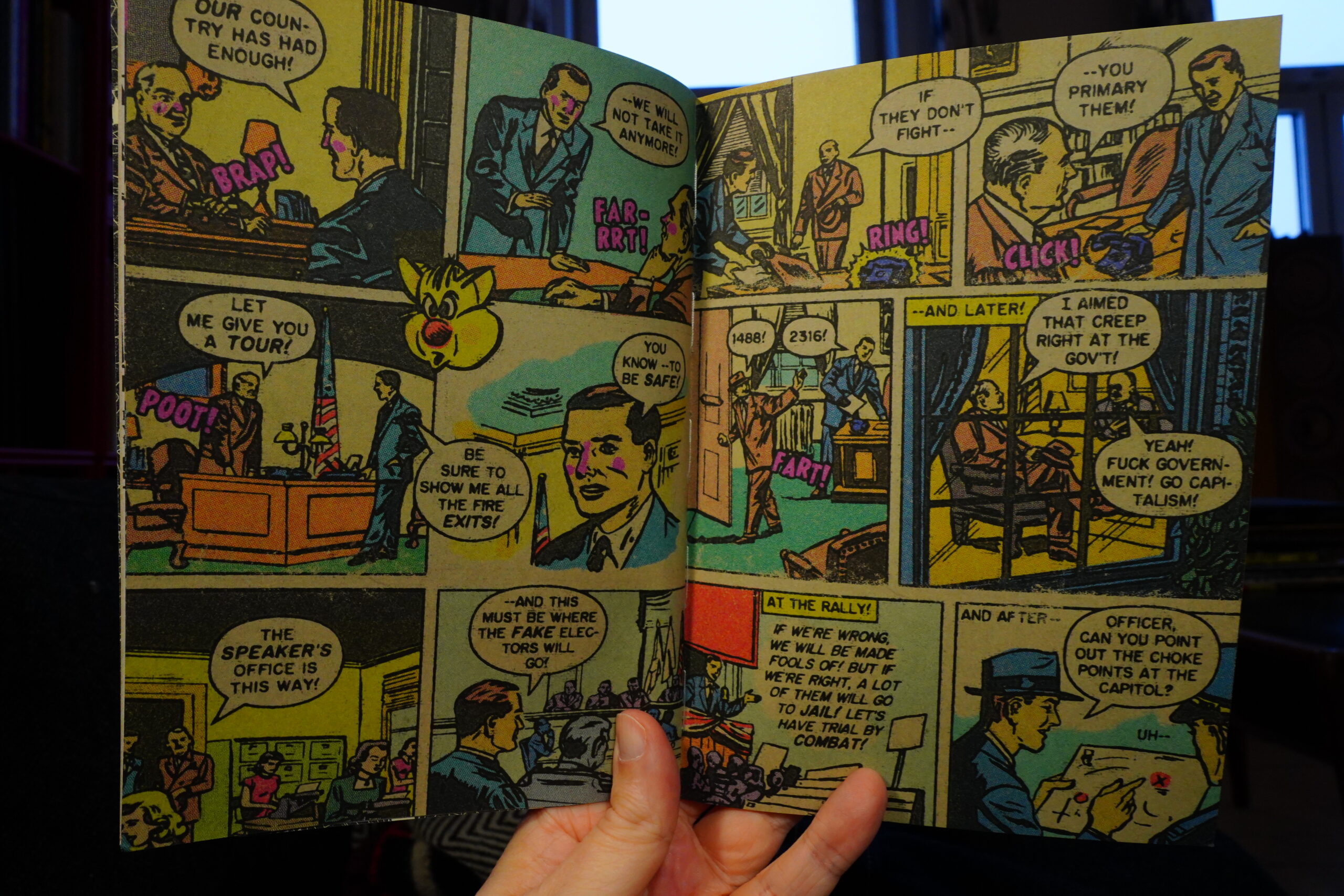
And very topical. I mean, the fourth panel on the right hand page could be about Musk, right? But it’s really about January 6th.
And there’s also joke novelty ads and stuff.
It’s fun, but it not funny enough.
| Eat-Girls: Area Silenzio |  |
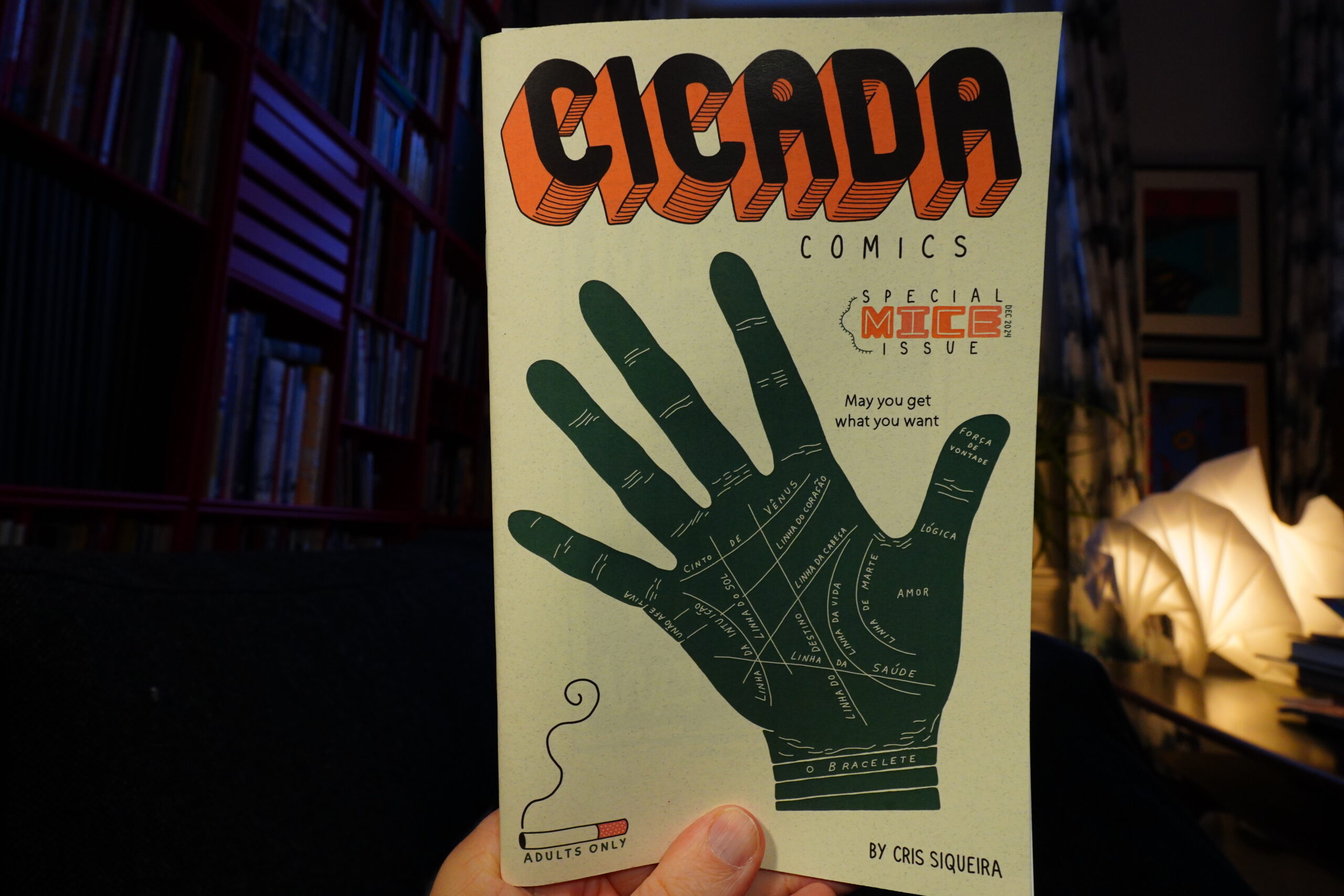
09:06: Cicada Comics by Cris Siqueira
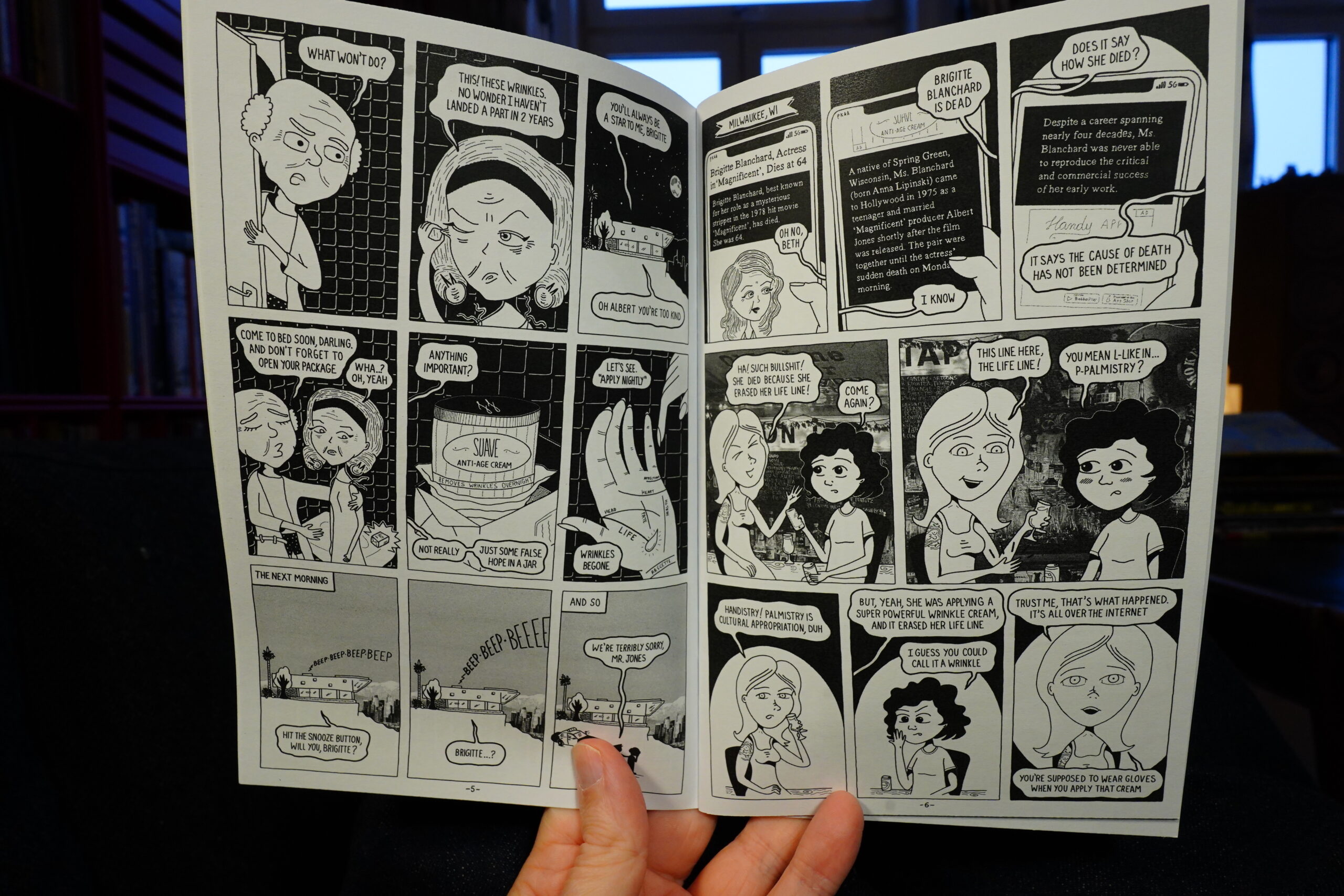
Heh heh. “Her role as a mysterious stripper”.
This is a lot of fun — it proceeds at a very appealing pace.
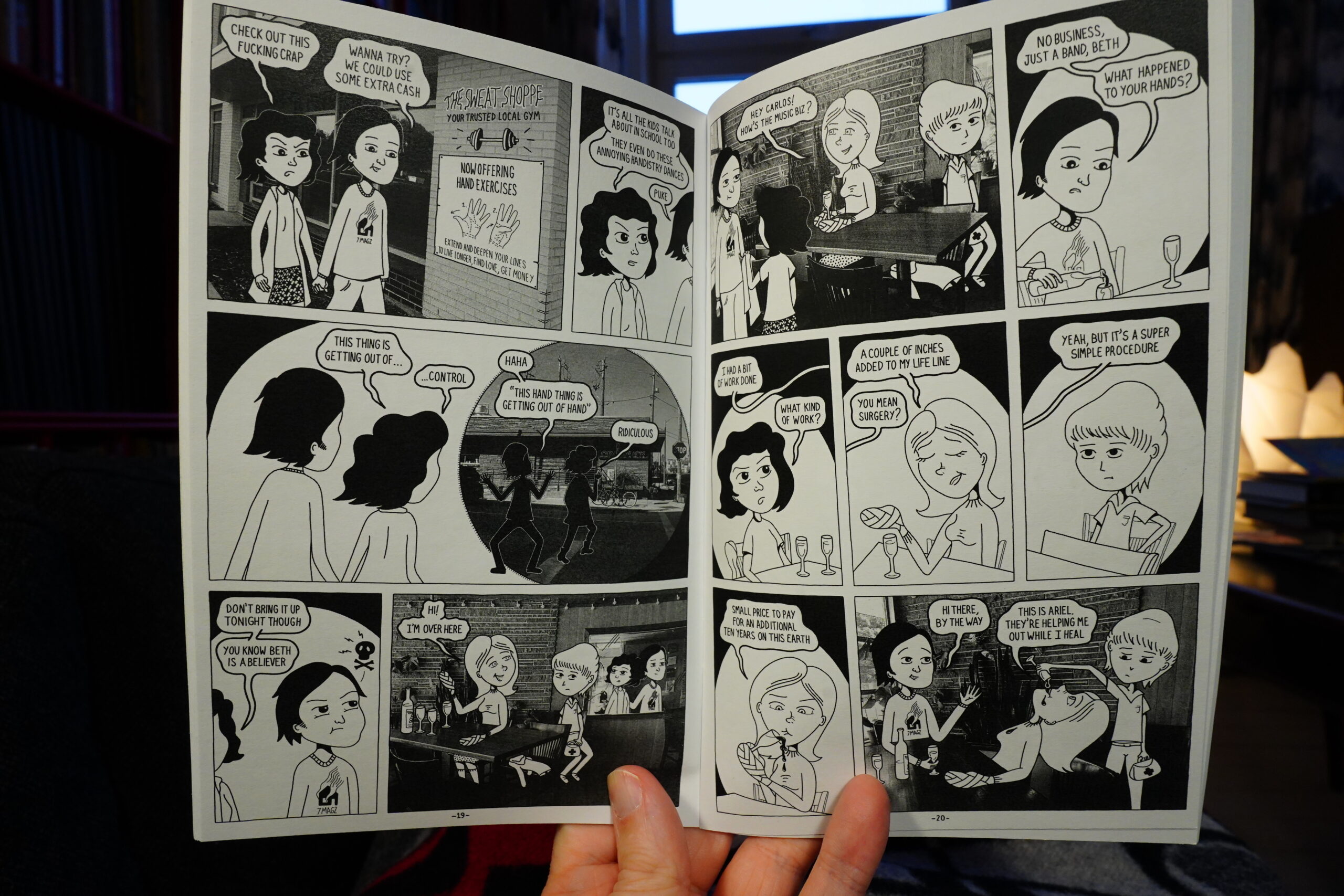
There’s a murder mystery, and a new fad sweeping the nation — “handistry” — where people have surgery on their hands to extend the life line to live longer, etc. It’s a smart and funny book.
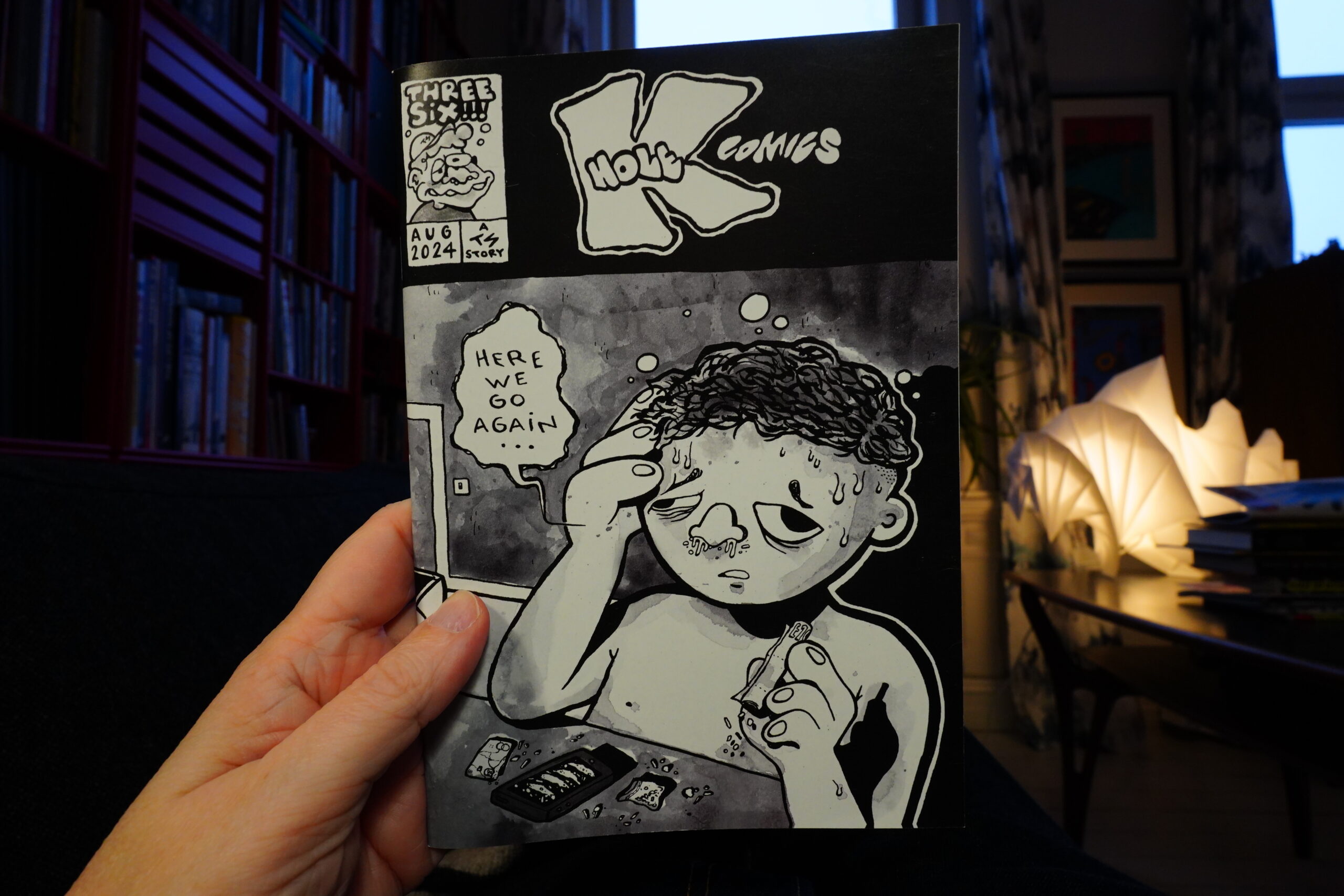
09:35: K-Hole Comics by Three Six
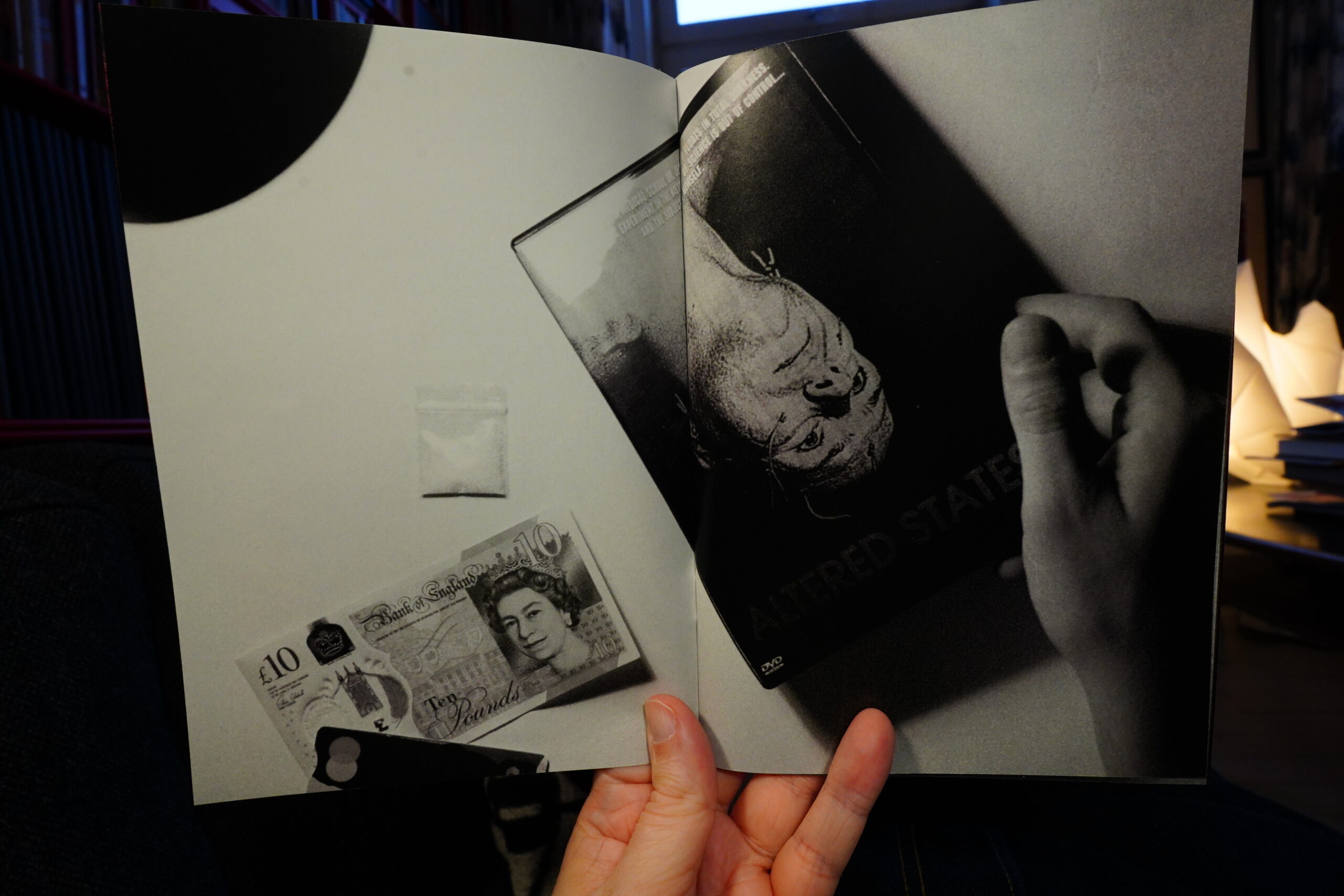
*gasp* Drugs!
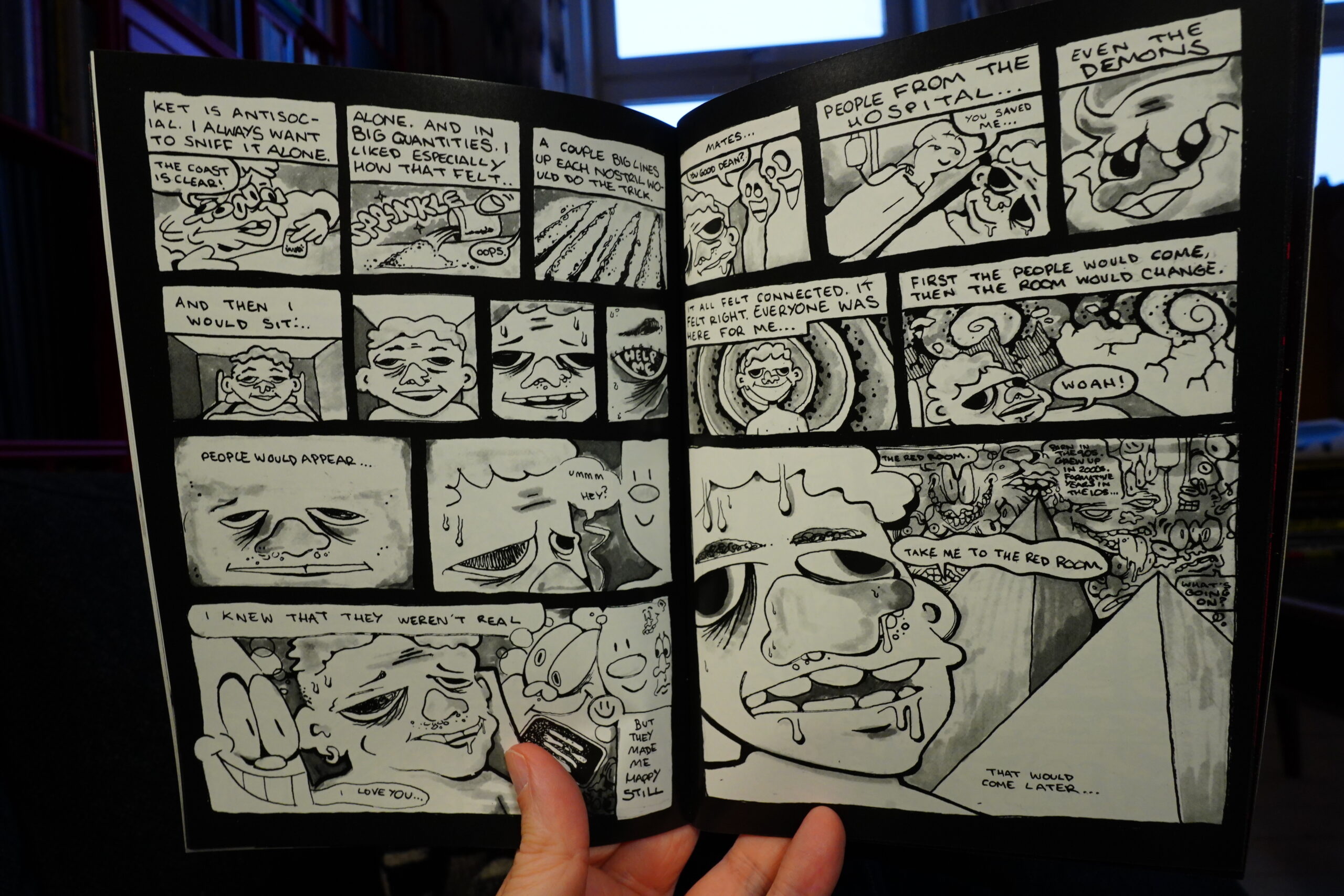
This is about being on ketamine, and it’s really well told.
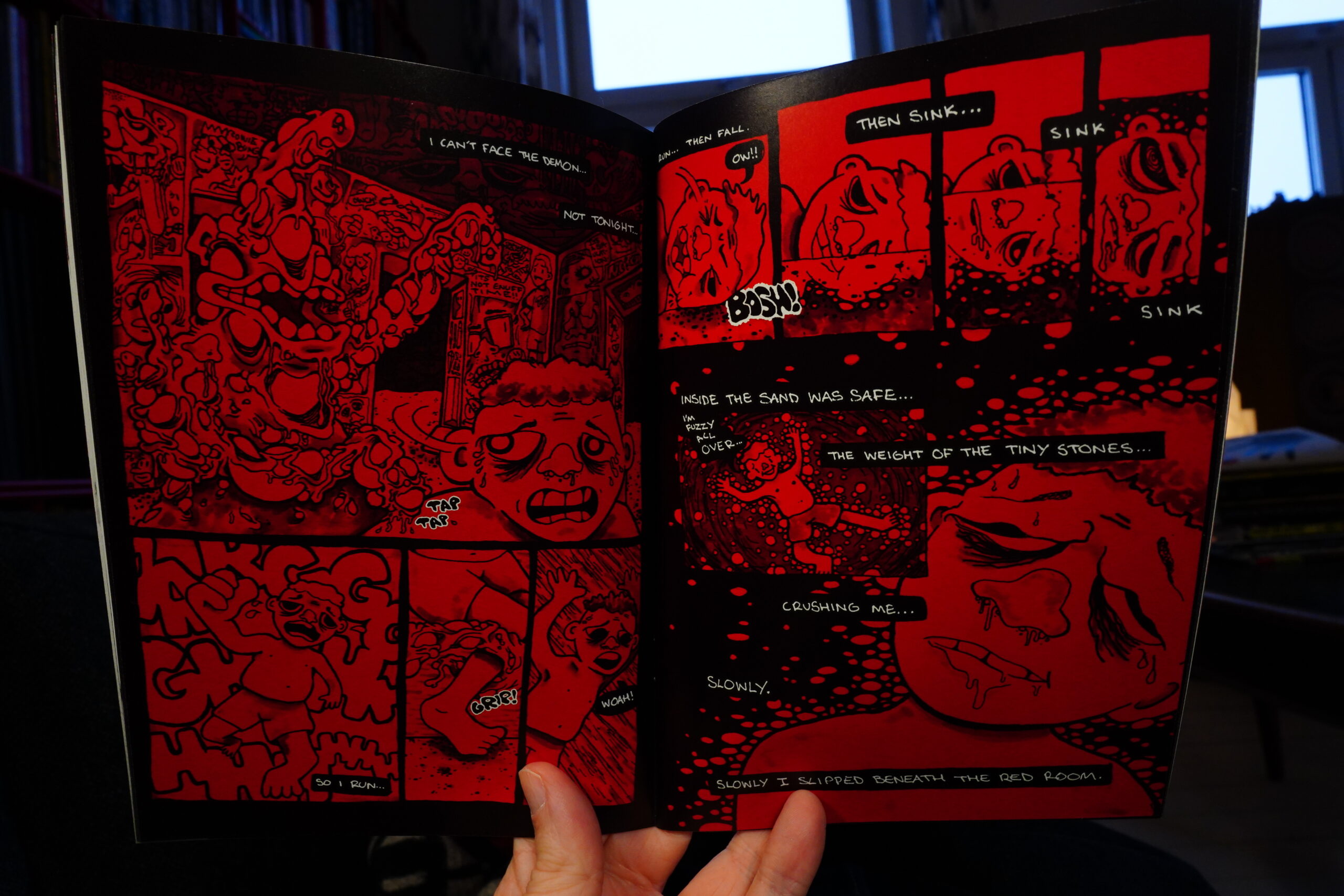
It’s interesting — good storytelling chops.
OK, I’m fading now, but perhaps a could more short comics before I call it a night. I mean day.
| Blood Incantation: Absolute Elsewhere |  |

09:52: Wedding Juice and Other Melodramas by Sanika Phawde

This is a lot of fun.

It’s very good, but way too brief. Just when it’s getting started, the book is over. Well, this is the first issue in a series, so I’m aboard…

10:02: Smoke Signal 43 edited by Gabe Fowler (Desert Island)
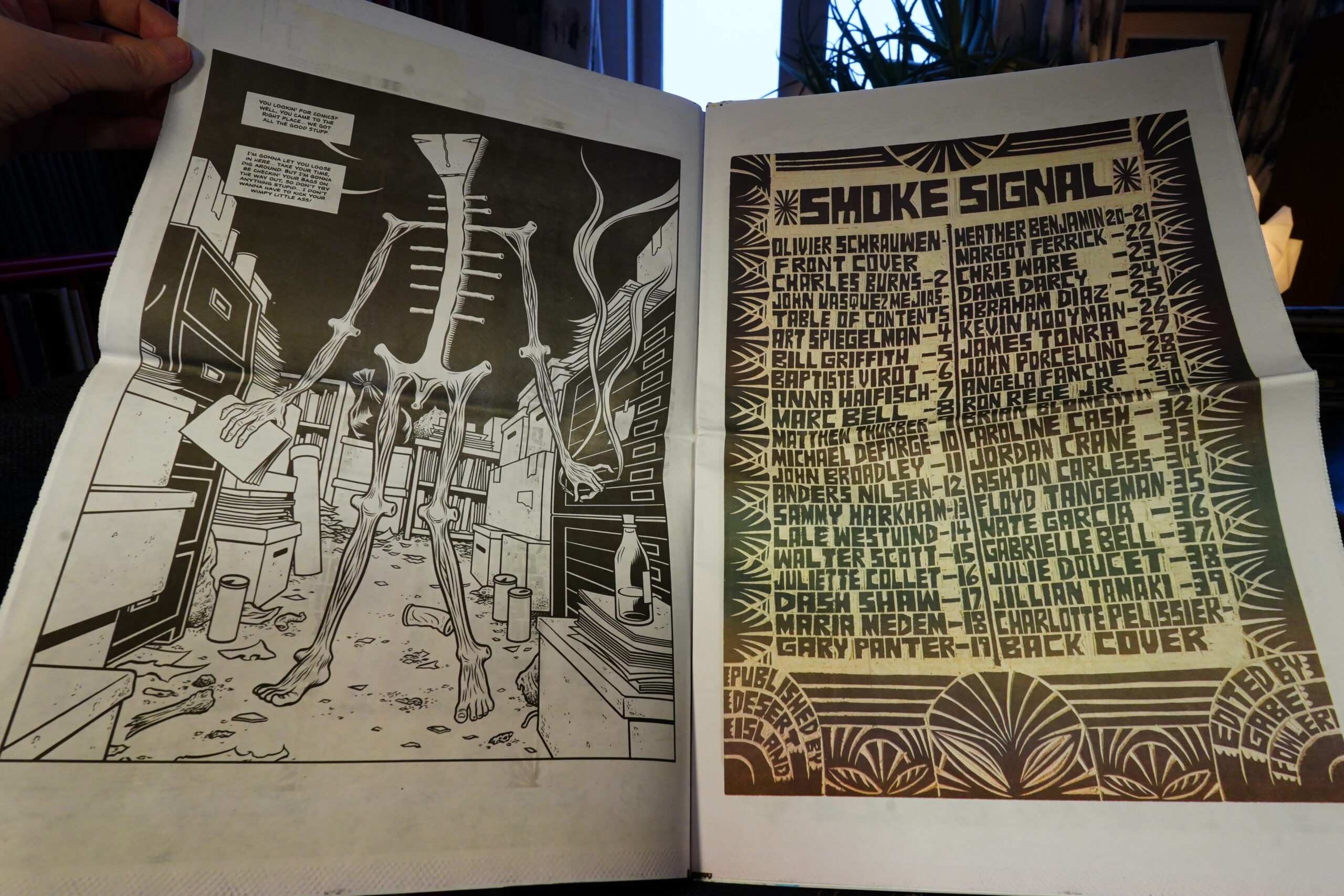
Wow, that’s some lineup… I guess this issue is to er commemorate Desert Island moving to a new location? Or something?

Anyway, it’s an impressive issue.
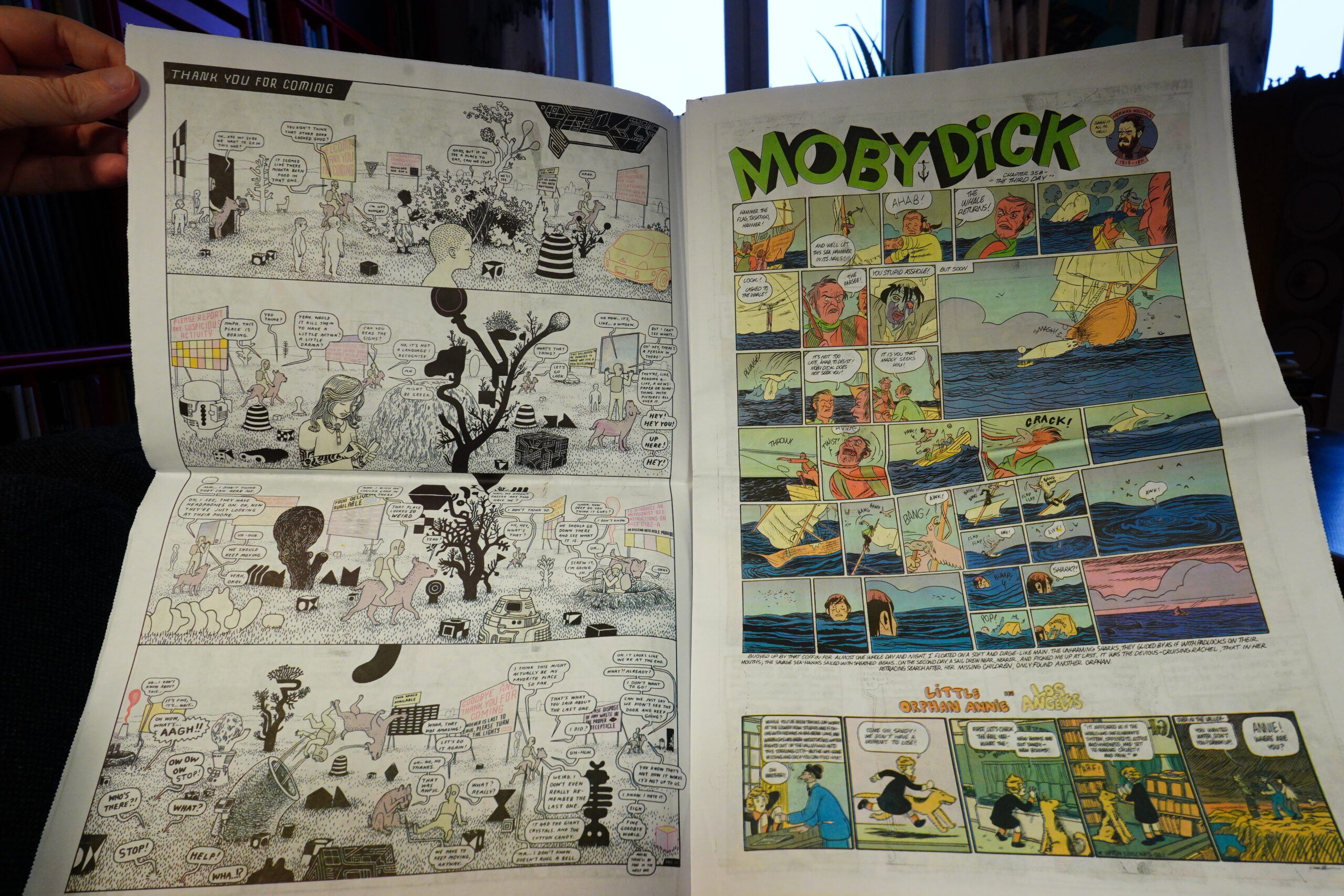
Many of the artists use the huge pages to their advantage, and it turns into a pretty compelling anthology after some initial pages that seem more random…
10:24: The End
OK, that’s enough comics for one night. I mean day.


























































































